Frank F. Weber's Blog, page 7
July 6, 2021
Cover Me
Why did my past book covers feature young females? The #1 reason is true crime statistics, but
you might want to read reasons 2, 3 and 4 also.
1. I write about true crime cases.
Look at the data: Department of Justice report:
Department of Justice report:
Persons age 12 to 24 comprised:
22% of the population
35% of murder victims
49% of serious violent crime victims
Persons age 18 to 21 were the most likely to experience a serious violent crime.
Most victims of sexual assault are females under the age of 25.
~ My book covers feature people who look like characters in the story. I place them in scenes in the story. I write about cases I’m familiar with. When these statistics change, I’ll have access to more stories of all ages.
~ Why don’t I have pictures of the killers? It couldn’t be a “Whodunnit?” if there was a picture of the killer on the cover.
2. Prevention & Marketing
In 2020, I presented at a virtual event with Dr. Amanda Vicary, True Crime researcher and Associate Professor at the University of Illinois Wesleyan. Dr. Amanda Vicary University of Illinois Wesleyan Here are some quotes from Dr. Vicary: “Compared to men, women liked reading about the psychological content of true crime stories. Stories where a killer was interviewed by an FBI profile, or that you're trying to get to the inner workings of a killer in some way.” Women, she found, were also more likely to read true crime books if the victim in the story was female.
Dr. Amanda Vicary University of Illinois Wesleyan Here are some quotes from Dr. Vicary: “Compared to men, women liked reading about the psychological content of true crime stories. Stories where a killer was interviewed by an FBI profile, or that you're trying to get to the inner workings of a killer in some way.” Women, she found, were also more likely to read true crime books if the victim in the story was female.
Dr Vicary: “My conclusion was that women all seemed to like reading about survival, whether it was preventing or surviving a crime. Research shows that women fear crime more than men, since they're more likely to be a victim of one. My thinking is that this fear is leading women, even subconsciously, to be interested in true crime, because they want to learn how to prevent it.”
 Amanda Jacobson The third present of the virtual True Crime event I participated in was Wine and Crime podcast star, Amanda Jacobson. Wine and Crime has half a million downloads—every month—and 85% of their audience is female.
Amanda Jacobson The third present of the virtual True Crime event I participated in was Wine and Crime podcast star, Amanda Jacobson. Wine and Crime has half a million downloads—every month—and 85% of their audience is female.
*My books educate readers on how crimes play out and on how perpetrators think. Knowledge is power.
3. Changing the World
People say, “…But if you keep doing that, the world is never going to change.”
First of all, thank you for suggesting my books are that powerful. Second, I agree. I will do whatever I feel is appropriate for the book and be open to feedback. I continue to learn.
How do you change the world? As a therapist I’ve learned you can’t go from A to Z. You can go from A to B. B to C. C to D... and eventually you get to Z.
I am not criticizing any of the books or authors below. I simply want to be evaluated with the same criteria as other authors.
Two years ago, after both Last Call and The I-94 Murders won best romance, on successive years, I was invited to sign books at a Romance Novel convention In Sioux City. Believe me, my covers are very tame compared to all of the other books sold there. Even with mainstream books, I believe that we need to start featuring pictures of whole women, rather than faceless bodies. My book covers feature an entire person. Here are some examples of popular books: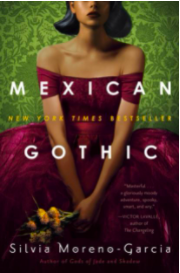
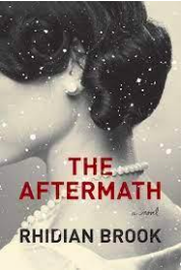
 For people who have read my books, I never refer to adult women as girls. Is it more demeaning to have a picture of a woman on the cover, or to refer to an adult women as a “girl”? Again, I’m not criticizing these books or the authors. I just want people to judge fair. I think Gillian Flynn is a great author, and while I wouldn’t try to compare my skills to hers, it was by reading her work that I realized there is an audience for my type of writing.
For people who have read my books, I never refer to adult women as girls. Is it more demeaning to have a picture of a woman on the cover, or to refer to an adult women as a “girl”? Again, I’m not criticizing these books or the authors. I just want people to judge fair. I think Gillian Flynn is a great author, and while I wouldn’t try to compare my skills to hers, it was by reading her work that I realized there is an audience for my type of writing.
Here are some popular examples:
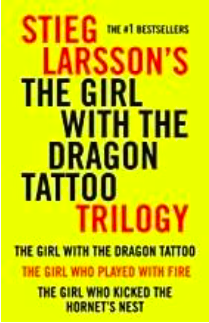
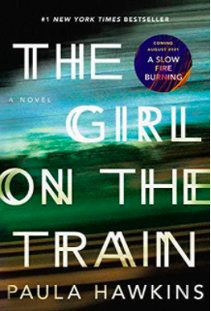
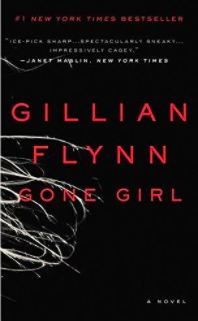 *There are times, particularly with Burning Bridges, I’ve thought about toning down the reality of the crimes, but as a reader I would feel insulted if the author felt I couldn’t handle the truth. My books are intended for true crime enthusiasts. I never make an assault sound appealing. I always talk about victim impact.
*There are times, particularly with Burning Bridges, I’ve thought about toning down the reality of the crimes, but as a reader I would feel insulted if the author felt I couldn’t handle the truth. My books are intended for true crime enthusiasts. I never make an assault sound appealing. I always talk about victim impact.
I know I’m going to receive some questions about my next book cover such as: Does my next book cover feature a male because of comments on the covers?
The honest answer is “no.” My next book cover was planned 2 years ago. I started the book 2 years ago, and then Investigator Michael Lewandowski, dropped a great story in my lap. An intense, sometimes gruesome, true story. So, I stopped and wrote Burning Bridges based on that story and honestly, photographer Trisha Spencer did amazing work with both the front and back covers. Both Kloe Kapsner (walking out on railroad trestle over the Mississippi river) and Elise Yates (slowly raising smoke bombs while standing on a rock by rushing water) courageously created the amazing art.
Here are the covers of my books: (I do not have the back cover of Murder Book picture since my former publisher did not release it to me in a useable format. It was a snow-covered church. No people in the picture.)



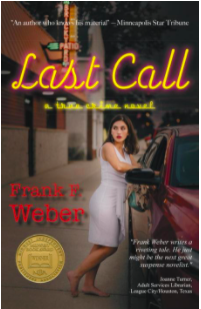

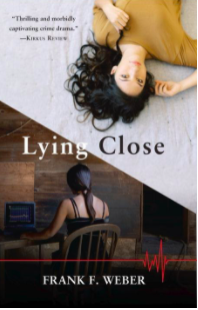


 4. Is every person on every cover going to be beautiful?
4. Is every person on every cover going to be beautiful?
Everyone is potentially beautiful, and I would never want anyone to say that I finally got someone less beautiful. Every person who has appeared on my covers is someone whose accomplishments and work ethic make their families proud and that’s good enough for me. None were professional models. Will my covers continue to include people of a variety races and ethnic origin? Yes.
I will continue to address covers, as I see fit for the story.
Honestly, my wife Brenda is the most beautiful person I have met in my life and that belief hasn’t changed since I was 18 years old. (And by the way, that’s not changing.)
Here are the pictures inserted in my books.




 I used this picture for the insert because of the genuine creepiness in the smoke above Kloe. A smoke bomb was burning behind Kloe. I thought it was interesting how the rising smoke could be viewed as skulls.
I used this picture for the insert because of the genuine creepiness in the smoke above Kloe. A smoke bomb was burning behind Kloe. I thought it was interesting how the rising smoke could be viewed as skulls.
Below is a teaser for possible cover for book #6. I’ll send post some options in about a month and ask you for feedback.
 It’s interesting that now that my books are so popular people want to paint me into a corner and I am doing my best to avoid it. I was told I should have “murder” in all the titles after Murder Book and The I-94 Murders. My response was, “I’m not doing that.” I was told I should have all two-word titles after Last Call, Lying Close and Burning Bridges. I’m not doing that either. It was suggested I have a young woman on the cover of every book. And I’m not doing that.
It’s interesting that now that my books are so popular people want to paint me into a corner and I am doing my best to avoid it. I was told I should have “murder” in all the titles after Murder Book and The I-94 Murders. My response was, “I’m not doing that.” I was told I should have all two-word titles after Last Call, Lying Close and Burning Bridges. I’m not doing that either. It was suggested I have a young woman on the cover of every book. And I’m not doing that.
I’m approaching every book with the focus of becoming a better author and telling the best story I can tell. Burning Bridges is hot off the press and selling like mad! Thank you all for your kind support!
Thanks for listening,
Frank
 Time for car shows in Pierz again!
Time for car shows in Pierz again! 

 Jack Johnson- Flake
Jack Johnson- Flake
you might want to read reasons 2, 3 and 4 also.
1. I write about true crime cases.
Look at the data:
 Department of Justice report:
Department of Justice report:Persons age 12 to 24 comprised:
22% of the population
35% of murder victims
49% of serious violent crime victims
Persons age 18 to 21 were the most likely to experience a serious violent crime.
Most victims of sexual assault are females under the age of 25.
~ My book covers feature people who look like characters in the story. I place them in scenes in the story. I write about cases I’m familiar with. When these statistics change, I’ll have access to more stories of all ages.
~ Why don’t I have pictures of the killers? It couldn’t be a “Whodunnit?” if there was a picture of the killer on the cover.
2. Prevention & Marketing
In 2020, I presented at a virtual event with Dr. Amanda Vicary, True Crime researcher and Associate Professor at the University of Illinois Wesleyan.
 Dr. Amanda Vicary University of Illinois Wesleyan Here are some quotes from Dr. Vicary: “Compared to men, women liked reading about the psychological content of true crime stories. Stories where a killer was interviewed by an FBI profile, or that you're trying to get to the inner workings of a killer in some way.” Women, she found, were also more likely to read true crime books if the victim in the story was female.
Dr. Amanda Vicary University of Illinois Wesleyan Here are some quotes from Dr. Vicary: “Compared to men, women liked reading about the psychological content of true crime stories. Stories where a killer was interviewed by an FBI profile, or that you're trying to get to the inner workings of a killer in some way.” Women, she found, were also more likely to read true crime books if the victim in the story was female.Dr Vicary: “My conclusion was that women all seemed to like reading about survival, whether it was preventing or surviving a crime. Research shows that women fear crime more than men, since they're more likely to be a victim of one. My thinking is that this fear is leading women, even subconsciously, to be interested in true crime, because they want to learn how to prevent it.”
 Amanda Jacobson The third present of the virtual True Crime event I participated in was Wine and Crime podcast star, Amanda Jacobson. Wine and Crime has half a million downloads—every month—and 85% of their audience is female.
Amanda Jacobson The third present of the virtual True Crime event I participated in was Wine and Crime podcast star, Amanda Jacobson. Wine and Crime has half a million downloads—every month—and 85% of their audience is female. *My books educate readers on how crimes play out and on how perpetrators think. Knowledge is power.
3. Changing the World
People say, “…But if you keep doing that, the world is never going to change.”
First of all, thank you for suggesting my books are that powerful. Second, I agree. I will do whatever I feel is appropriate for the book and be open to feedback. I continue to learn.
How do you change the world? As a therapist I’ve learned you can’t go from A to Z. You can go from A to B. B to C. C to D... and eventually you get to Z.
I am not criticizing any of the books or authors below. I simply want to be evaluated with the same criteria as other authors.
Two years ago, after both Last Call and The I-94 Murders won best romance, on successive years, I was invited to sign books at a Romance Novel convention In Sioux City. Believe me, my covers are very tame compared to all of the other books sold there. Even with mainstream books, I believe that we need to start featuring pictures of whole women, rather than faceless bodies. My book covers feature an entire person. Here are some examples of popular books:


 For people who have read my books, I never refer to adult women as girls. Is it more demeaning to have a picture of a woman on the cover, or to refer to an adult women as a “girl”? Again, I’m not criticizing these books or the authors. I just want people to judge fair. I think Gillian Flynn is a great author, and while I wouldn’t try to compare my skills to hers, it was by reading her work that I realized there is an audience for my type of writing.
For people who have read my books, I never refer to adult women as girls. Is it more demeaning to have a picture of a woman on the cover, or to refer to an adult women as a “girl”? Again, I’m not criticizing these books or the authors. I just want people to judge fair. I think Gillian Flynn is a great author, and while I wouldn’t try to compare my skills to hers, it was by reading her work that I realized there is an audience for my type of writing.Here are some popular examples:


 *There are times, particularly with Burning Bridges, I’ve thought about toning down the reality of the crimes, but as a reader I would feel insulted if the author felt I couldn’t handle the truth. My books are intended for true crime enthusiasts. I never make an assault sound appealing. I always talk about victim impact.
*There are times, particularly with Burning Bridges, I’ve thought about toning down the reality of the crimes, but as a reader I would feel insulted if the author felt I couldn’t handle the truth. My books are intended for true crime enthusiasts. I never make an assault sound appealing. I always talk about victim impact.I know I’m going to receive some questions about my next book cover such as: Does my next book cover feature a male because of comments on the covers?
The honest answer is “no.” My next book cover was planned 2 years ago. I started the book 2 years ago, and then Investigator Michael Lewandowski, dropped a great story in my lap. An intense, sometimes gruesome, true story. So, I stopped and wrote Burning Bridges based on that story and honestly, photographer Trisha Spencer did amazing work with both the front and back covers. Both Kloe Kapsner (walking out on railroad trestle over the Mississippi river) and Elise Yates (slowly raising smoke bombs while standing on a rock by rushing water) courageously created the amazing art.
Here are the covers of my books: (I do not have the back cover of Murder Book picture since my former publisher did not release it to me in a useable format. It was a snow-covered church. No people in the picture.)








 4. Is every person on every cover going to be beautiful?
4. Is every person on every cover going to be beautiful?Everyone is potentially beautiful, and I would never want anyone to say that I finally got someone less beautiful. Every person who has appeared on my covers is someone whose accomplishments and work ethic make their families proud and that’s good enough for me. None were professional models. Will my covers continue to include people of a variety races and ethnic origin? Yes.
I will continue to address covers, as I see fit for the story.
Honestly, my wife Brenda is the most beautiful person I have met in my life and that belief hasn’t changed since I was 18 years old. (And by the way, that’s not changing.)
Here are the pictures inserted in my books.




 I used this picture for the insert because of the genuine creepiness in the smoke above Kloe. A smoke bomb was burning behind Kloe. I thought it was interesting how the rising smoke could be viewed as skulls.
I used this picture for the insert because of the genuine creepiness in the smoke above Kloe. A smoke bomb was burning behind Kloe. I thought it was interesting how the rising smoke could be viewed as skulls.Below is a teaser for possible cover for book #6. I’ll send post some options in about a month and ask you for feedback.
 It’s interesting that now that my books are so popular people want to paint me into a corner and I am doing my best to avoid it. I was told I should have “murder” in all the titles after Murder Book and The I-94 Murders. My response was, “I’m not doing that.” I was told I should have all two-word titles after Last Call, Lying Close and Burning Bridges. I’m not doing that either. It was suggested I have a young woman on the cover of every book. And I’m not doing that.
It’s interesting that now that my books are so popular people want to paint me into a corner and I am doing my best to avoid it. I was told I should have “murder” in all the titles after Murder Book and The I-94 Murders. My response was, “I’m not doing that.” I was told I should have all two-word titles after Last Call, Lying Close and Burning Bridges. I’m not doing that either. It was suggested I have a young woman on the cover of every book. And I’m not doing that. I’m approaching every book with the focus of becoming a better author and telling the best story I can tell. Burning Bridges is hot off the press and selling like mad! Thank you all for your kind support!
Thanks for listening,
Frank
 Time for car shows in Pierz again!
Time for car shows in Pierz again! 

 Jack Johnson- Flake
Jack Johnson- Flake
Published on July 06, 2021 11:57
June 15, 2021
The Sunset Strip Killer
 Sunset Strip in Los Angeles The 1980’s were a violent period in the U.S. In one year, there were 1200 murders within the city limits of Los Angeles. (4 people murdered every day)
Sunset Strip in Los Angeles The 1980’s were a violent period in the U.S. In one year, there were 1200 murders within the city limits of Los Angeles. (4 people murdered every day) Cindy Chandler, age 16
Cindy Chandler, age 16Half-sisters, Cindy Chandler 16, and Gina Moreno 15, came from a middle-class family. They hitchhiked to Los Angeles with the hope of making a life in the big city. The 1980’s and 1990’s was the period in the U.S. where you were most likely to be murdered. (Even with all of the shootings we have today.) Ironically, we didn’t know how dangerous it was as the total number of murders didn’t get the publicity they receive today. Sadly, they treated serial killers like rockstars by giving them nicknames and horror show publicity. Maybe it’s why there were 7 times as many serial killers then, as there are today. I put pictures of victims in my articles, because I want people to remember that these were young girls, who were tortured for no reason other than people wanted to be cruel to feed their narcissistic egos.
On June 1, 1980, Chandler and Marano attended a party given by Mark Gottesman, an attorney, at his Hollywood home. Many people were there, including a number of Gottesman's clients. Mindy Cohen, a guest at the party, saw the two girls. She talked to Gina Marano and gave the girl her telephone number. Marano wrote the number in an address book she carried with her.
On the afternoon of June 10, 1980, Henry Brigges was driving a moving truck. He picked up two female hitchhikers. One of the girls, with blonde hair, gave her name as Cindy. The other girl had dark hair. Worried for their safety, Brigges gave the blonde girl his business card, bearing both his own telephone number and the number of his brother and sister-in-law. He dropped the girls off at the entrance to a freeway onramp. The girls had the sense of invincibility many of us had as midteens.
 Gina Morena, age 15
Gina Morena, age 15About 1:30 p.m. on June 12, 1980, police were called to the scene of a freeway ramp near the Forest Lawn cemetery, where a highway worker had found the bodies of two young girls. Cynthia Chandler, a blonde 16–year–old, was found with a pink jumpsuit wrapped around her legs. The inseam of the jumpsuit was slit up to her genital area. There was blood on the jumpsuit, and a spot of grease. Chandler's half-sister, Gina Marano, age 15, was clothed only in a red tube-top pulled down around her waist. No underwear was found. Gina’s address book was nowhere to be found. They were both sexually assaulted and shot twice. Investigators wonder if they are victims of the Hillside Strangler who was active in LA at this time. (They weren’t.)
A woman calls investigators and tells them details about the shooting not released to the public. Gina was shot in the head and in the heart. The gun had been placed against her chest when it was fired. Cindy was shot twice in the head. The caller says she knows the killer but doesn’t give his name or her name. Both victims were shot by a .22 caliber pistol called a Raven.
 Karen Jones Exxie Wilson Murders of Karen Jones and Exxie Wilson
Karen Jones Exxie Wilson Murders of Karen Jones and Exxie WilsonAt 2:15 a.m. on June 23, 1980, an officer patrolling Sunset Boulevard met a sex worker named Karen Jones. He warned her not to loiter in that area. A resident of the area heard a scream outside his home between 2:30 a.m. At 3:15 a.m., Karen Jones's body was discovered lying by the curb in a pool of blood around her face and hair. She had been shot in the head with the same Raven pistol as the two previous victims.
At 7:15 a.m. that same morning, a decapitated body, later identified as that of Exxie Wilson, was discovered in the parking lot of a restaurant. A red dress with a sash was found in a dumpster next to the body. The sash was cut into pieces. No other articles of clothing were found at the scene.
Four days later, around 1:00 a.m., June 27, 1980, a wooden box was discovered in an alley. The severed blonde head of Exxie Wilson was inside the box, wrapped in a pair of blue jeans and a pink T-shirt with the inscription “Daddy's Girl.” (These items of clothing were ultimately identified as belonging to another victim, Marnette Comer.) The head had been frozen and appeared to have been scrubbed.
 Marnette Comer On June 30, 1980, the nude body of Marnette Comer, a blonde sex worker, was found in a ravine off Foothill Boulevard, not far from the freeway. Freeway lights were visible from the site in the ravine where the body was found. The ravine itself was dark at night. Comer had been dead for 20–40 days. The autopsy showed that Comer had suffered three gunshot wounds to the chest area. Two .25–caliber bullets fired from a Raven pistol were recovered from the body. Sabra Comer, the sister of Marnette Comer, last saw her on May 21, 1980. At that time, Marnette was wearing a pink T-shirt with the words ``Daddy's Girl” printed on it. I feel bad when I think of the horrible circumstances that had to lead to her lifestyle, and death.
Marnette Comer On June 30, 1980, the nude body of Marnette Comer, a blonde sex worker, was found in a ravine off Foothill Boulevard, not far from the freeway. Freeway lights were visible from the site in the ravine where the body was found. The ravine itself was dark at night. Comer had been dead for 20–40 days. The autopsy showed that Comer had suffered three gunshot wounds to the chest area. Two .25–caliber bullets fired from a Raven pistol were recovered from the body. Sabra Comer, the sister of Marnette Comer, last saw her on May 21, 1980. At that time, Marnette was wearing a pink T-shirt with the words ``Daddy's Girl” printed on it. I feel bad when I think of the horrible circumstances that had to lead to her lifestyle, and death.Another call from the woman comes in claiming she knows the killer. This time the police were able to keep her on the phone and identify her as Carol Bundy. Carol was employed as a nurse at Valley Medical Center in Van Nuys. Carol reveals she had been sexually abused by her father and sold for sex by her first husband. Her second husband was emotionally abusive before he left her. Carol reports she is now involved with a married man named Jack Murray who needs to dominate her during sex. Jack is also frequently borrowing money from her, ($10,000 at one time). Jack lives what I would call a parasitic lifestyle—finding a host to live off for as long as he can until he milks her dry. Still he ended up getting the worst of this relationship as Carol turned out to be a praying mantis.
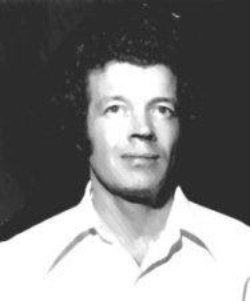 Jack Murray Another decapitated body is found in a van. This time it’s a male who had knife wounds in his scrotum. Carol calls and tells investigators the body is Jack Murray. Carol stated she enticed Jack into her van with oral sex, knifed him in the groin and then killed him. She further admitted decapitating him. However, she stated it was Doug Clark who killed 6 women during the summer of 1979.
Jack Murray Another decapitated body is found in a van. This time it’s a male who had knife wounds in his scrotum. Carol calls and tells investigators the body is Jack Murray. Carol stated she enticed Jack into her van with oral sex, knifed him in the groin and then killed him. She further admitted decapitating him. However, she stated it was Doug Clark who killed 6 women during the summer of 1979. Carol had met Douglas Clark in December of 1979. Doug has no male friends. He moved in with Carol. He shared his fantasies of capturing women and sexually assaulting them. Carol claims Doug Clark killed the three identified women, plus another unidentified woman by a water tower. Carol describes herself as a dainty housewife. Investigators were very aware that she was able to describe the smells and sounds near the homicides and investigators question her involvement in all the murders.
Attempted Murder of Charlene A.:
It’s sad that more people don’t come forward when attacked. As I’ve demonstrated in my novels, killers are often not successful. Around 10:00 p.m., April 27, 1980, Charlene was on Sunset Boulevard. A man she later identified as Doug Clark approached, driving a blue station wagon, and solicited an act of oral copulation. After she entered the car, he suddenly began stabbing her repeatedly in the back, neck, arms, chest and stomach. In the ensuing struggle, Charlene grabbed the knife by the blade. The blade severed tendons in her hand. At one point, she said, “Mister, that's blood. You're hurtin' me.” He laughed and said, “I know.” She managed to yank open the car door and escape. Charlene identified Clark’s photograph from a lineup. (There were probably a dozen more of these scenarios where the victims never came forward.)
Doug Clark is finally arrested. Clark is a narcissist who feels he can talk his way out of anything. Clark initially insists he knows nothing about the murders. A search found his home was loaded with pornography. In the apartment they find a photo album of Doug being sexual with a 11-year-old girl, “Shannon”, Carol used to babysit. Doug and Carol would take the girl along when he was sexual with prostitutes. A search of Clark’s storage unit finds Cindy Chandler and Gina Moreno’s blood. In addition, Clark’s bloody shoe prints are found on the floor of the storage unit.
 Sierra Highway On August 26, 1980 (after Doug Clark’s arrest), another body was discovered near the Sierra Highway in Antelope Valley. (This was the identified woman Carol Bundy spoke of.) A worker inspecting some nearby water towers came upon some human bones, scattered in a 10–foot radius about an oily spot that smelled of decomposing flesh. A clump of blonde hair was found in the vicinity of the site where the remains were found. The victim, an unidentified young female who had died about one to two months earlier, was designated merely “Jane Doe 18.” The cause of death was a gunshot wound to the back of the head. The coroner removed a .25–caliber jacketed bullet from the temporal area of the skull fired by a Raven pistol. This young woman’s identity was never established.
Sierra Highway On August 26, 1980 (after Doug Clark’s arrest), another body was discovered near the Sierra Highway in Antelope Valley. (This was the identified woman Carol Bundy spoke of.) A worker inspecting some nearby water towers came upon some human bones, scattered in a 10–foot radius about an oily spot that smelled of decomposing flesh. A clump of blonde hair was found in the vicinity of the site where the remains were found. The victim, an unidentified young female who had died about one to two months earlier, was designated merely “Jane Doe 18.” The cause of death was a gunshot wound to the back of the head. The coroner removed a .25–caliber jacketed bullet from the temporal area of the skull fired by a Raven pistol. This young woman’s identity was never established.Doug Clark admitted he went to the Hollywood area “pretty much” on a regular basis, primarily to “troll” for prostitutes and to go to clubs. Sometimes he would go by himself, but other times he would go with Bundy. He picked up “hookers” on Sunset Boulevard and several other locations. One night, he and Bundy “cruised” Anaheim after reading news stories of the Sunset killings because they wanted to see other areas where prostitutes hang out. Bundy also sometimes went with the defendant and paid hookers for “threesomes.” (Carol Bundy is no relation to Ted Bundy.)
 Carol Bundy Doug Clark Investigators don’t believe Doug Clark got rid of the gun, as it was too much of a fantasy item for him. A search of Clark’s worksite, the Andrew Jergens Factory in Burbank, revealed two Raven guns hidden behind loose bricks. During court, Mindy Cohen reveals Clark called her and threatened to kill her. Mindy was one of the last people to see Cindy Chandler and Gina Moreno. Even though Clark confessed to the murders, he later blames Bundy and claims he isn’t guilty. After Doug Clark is convicted of 6 murders, he requests the death penalty. Investigators believe Clark may have killed 20 women. He is still on death row.
Carol Bundy Doug Clark Investigators don’t believe Doug Clark got rid of the gun, as it was too much of a fantasy item for him. A search of Clark’s worksite, the Andrew Jergens Factory in Burbank, revealed two Raven guns hidden behind loose bricks. During court, Mindy Cohen reveals Clark called her and threatened to kill her. Mindy was one of the last people to see Cindy Chandler and Gina Moreno. Even though Clark confessed to the murders, he later blames Bundy and claims he isn’t guilty. After Doug Clark is convicted of 6 murders, he requests the death penalty. Investigators believe Clark may have killed 20 women. He is still on death row. Clark and Bundy continue to write to each other during their incarceration. Carol was convicted of two murders, Jack Clark and the unidentified woman. (Carol admitted handing Clark the gun to shoot her.) Carol Bundy receives 52 years to life for her testimony against Clark. In one of her interviews, she described killing as fun and joked about the difficulties of putting lipstick on a decapitated head. She died in prison in 2003 of heart failure.
The victims were naïve teens and young women who struggled to survive. Some were so destitute, there wasn’t even a good picture to share of them.
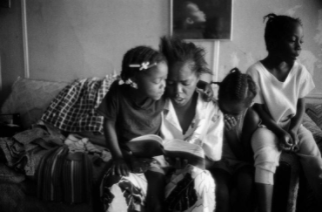
 America continues to be the place where dreams can come true. Still within our borders, there’s a generation of children who live outside of the dream. More than 13 million American children live in poverty. ½ of the poor in America are children. Good kids—with hopes and dreams. While the very richest Americans, people like Jeff Bezos, Elon Musk and Warren Buffett are paying 1% of their income in taxes. Jeff Bezos, the richest man in the world, has gone years without paying any taxes legally. The 2nd richest man, Elon Musk, paid no taxes in 2018. We have kids starving while the richest are planning their vacations in space. Let’s start putting some pressure on politicians to hold billionaires accountable and take the tax burden off of the working and middle class. Desperate kids end up on the streets and become the primary source of victims in these forensic articles.
America continues to be the place where dreams can come true. Still within our borders, there’s a generation of children who live outside of the dream. More than 13 million American children live in poverty. ½ of the poor in America are children. Good kids—with hopes and dreams. While the very richest Americans, people like Jeff Bezos, Elon Musk and Warren Buffett are paying 1% of their income in taxes. Jeff Bezos, the richest man in the world, has gone years without paying any taxes legally. The 2nd richest man, Elon Musk, paid no taxes in 2018. We have kids starving while the richest are planning their vacations in space. Let’s start putting some pressure on politicians to hold billionaires accountable and take the tax burden off of the working and middle class. Desperate kids end up on the streets and become the primary source of victims in these forensic articles.We have a responsibility to care for and look out for the vulnerable. It frustrates me to see people prey on them. Be kind. The world needs love. If you think about it, Jesus was the master of loving people who disagreed with him politically…
Thanks for listening,
Frank
Bob Dylan wrote a hundred songs most musicians would be happy to write one of. Here’s Nickel Creek playing my favorite: Tomorrow is a Long Time. Burning Bridges Book Openings start this week!




Published on June 15, 2021 21:14
June 3, 2021
Viable suspects, confessions, but no convictable evidence until a child support law changes.
The case of Stephanie Hummer bothers me because I feel like we have an obligation to look out for people, and even to try to protect young adults who aren’t ready for the threats terrible people in the world present. Stephanie was a 1993 Finneytown, Cincinnati, high school graduate. Stephanie was smart, attending Ohio State University on a full scholarship. She was also an athlete (track star) and described as a happy and kind young woman. The only thing going against her was she was just 18 years old.

 Stephanie Hummer Ohio State University In early March of 1994, at about 2:30 a.m. Stephanie was walking through an alley close to her dorm to a friend’s place when she disappeared. She was abducted on Pearl Alley, East of Ohio State campus, where she was a freshman. On March 6, 1994, her partially clothed body was discovered face down in field, 4 miles from her dorm. She had been sexually assaulted and bludgeoned in the back of her head.
Stephanie Hummer Ohio State University In early March of 1994, at about 2:30 a.m. Stephanie was walking through an alley close to her dorm to a friend’s place when she disappeared. She was abducted on Pearl Alley, East of Ohio State campus, where she was a freshman. On March 6, 1994, her partially clothed body was discovered face down in field, 4 miles from her dorm. She had been sexually assaulted and bludgeoned in the back of her head.  Pearl Alley by Ohio State University People with above average needs for attention can really hamper investigations. A seminary student, Anton Corian, confessed to a friend that he killed Stephanie. Investigators mic the friend and record a conversation in which Anton states again he killed Stephanie. Anton is pulled in for an interrogation. He tells investigators he was “running his mouth to a friend” based on information he pulled off of the news. Anton was familiar with the area as it was an area frequented by prostitutes. DNA testing indicates Anton was not the man who raped and killed Stephanie. (Strike 1 for investigators.)
Pearl Alley by Ohio State University People with above average needs for attention can really hamper investigations. A seminary student, Anton Corian, confessed to a friend that he killed Stephanie. Investigators mic the friend and record a conversation in which Anton states again he killed Stephanie. Anton is pulled in for an interrogation. He tells investigators he was “running his mouth to a friend” based on information he pulled off of the news. Anton was familiar with the area as it was an area frequented by prostitutes. DNA testing indicates Anton was not the man who raped and killed Stephanie. (Strike 1 for investigators.)
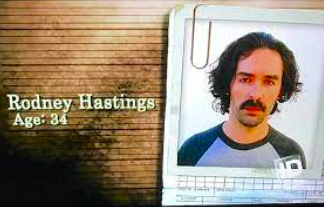 Picture used on Unusual Suspects show on the Investigative channel.
Picture used on Unusual Suspects show on the Investigative channel.
Rodney Hastings had a history of assaults by the Ohio State University campus, including a prior conviction for kidnapping and attempted rape. It was discovered Rodney would take a work van and drive along the college stopping women. He’d pretend to be a police officer and pat women down for his gratification. Rodney also picked up prostitutes in the area. Investigators discover Rodney’s former significant other lived in the same apartment complex as Stephanie Hastings. Rodney had been to the apartment complex frequently. This appears to be a solid lead. Rodney quickly requests an attorney. A search of his van finds no traces of Stephanie. A court ordered DNA test indicates Rodney Hastings was not the man who raped Stephanie. (Strike 2 for investigators.) In Youngstown Supermax prison in Ohio, 2 of every 3 inmates is a gang member. (Over 8000 total, with the largest gang being the Heartless Felons) Jermaine Espinoza calls investigators from a nearby prison. Jermaine was an inmate and an assistant GED instructor at the prison. He tells investigators he’s working with an inmate, Franklin Zaiden, who admitted killing Stephanie. Zaiden is incarcerated on a rape charge. Zaiden was a free man, when Stephanie was murdered. He was also attending drug counseling, just down the street from where Stephanie was murdered. Jermaine gives investigators a letter written by Zaiden admitting to the murder. This lead was promising as new DNA testing information indicated the rapist and killer was African American and Zaiden fits the bill. When detectives interview Franklin Zaiden, he admits to writing the letter. He stated Jermaine claimed to have a movie deal, and he wanted Zaiden to write this letter to show he could play the role of the killer. Jermaine was setting Zaiden up, in hope of receiving an early release. DNA testing was performed and Franklin Zaiden is not the man who raped and killed Stephanie. (Strike 3 for investigators.)
In Youngstown Supermax prison in Ohio, 2 of every 3 inmates is a gang member. (Over 8000 total, with the largest gang being the Heartless Felons) Jermaine Espinoza calls investigators from a nearby prison. Jermaine was an inmate and an assistant GED instructor at the prison. He tells investigators he’s working with an inmate, Franklin Zaiden, who admitted killing Stephanie. Zaiden is incarcerated on a rape charge. Zaiden was a free man, when Stephanie was murdered. He was also attending drug counseling, just down the street from where Stephanie was murdered. Jermaine gives investigators a letter written by Zaiden admitting to the murder. This lead was promising as new DNA testing information indicated the rapist and killer was African American and Zaiden fits the bill. When detectives interview Franklin Zaiden, he admits to writing the letter. He stated Jermaine claimed to have a movie deal, and he wanted Zaiden to write this letter to show he could play the role of the killer. Jermaine was setting Zaiden up, in hope of receiving an early release. DNA testing was performed and Franklin Zaiden is not the man who raped and killed Stephanie. (Strike 3 for investigators.)
And the case goes cold for over a decade…
A change in child support laws in Ohio solves the case. If a person falls behind in their child support, they can be convicted of a felony. And a person who is convicted of a felony, has to turn in a DNA sample.
Jonathan Gravely was a star track and football star from Whetstone High School which was close to the Ohio State campus. In 2006, Gravely is 35 years old and now has a good paying job at a factory. At the time, Gravely was considered a generally good person who had no problems with the law--until he’s arrested for failure to pay child support for one of his children. 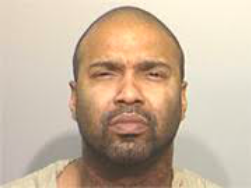 Jonathan Gravely’s DNA is taken and entered the CODIS system. It matches the DNA of the rapist and killer of Stephanie Hummer. Gravely had never been a suspect in the initial investigation. Investigators say they did thousands of interviews but had no idea he existed. They say the crime was random, that Gravely did not know Stephanie. Jonathan Gravely plead guilty and made this statement: "I have not lived a life of crime, but what I did on that date was inexcusable. I want to apologize to the Hummer family for what I've done."
Jonathan Gravely’s DNA is taken and entered the CODIS system. It matches the DNA of the rapist and killer of Stephanie Hummer. Gravely had never been a suspect in the initial investigation. Investigators say they did thousands of interviews but had no idea he existed. They say the crime was random, that Gravely did not know Stephanie. Jonathan Gravely plead guilty and made this statement: "I have not lived a life of crime, but what I did on that date was inexcusable. I want to apologize to the Hummer family for what I've done."
 Even smart athletes can be abducted. Gravely claims he picked Stephanie up at a bar, and after they were together, she threatened to tell his partner about their relationship. He claimed he hit her and accidentally killed her. Investigators know this isn’t true. Stephanie didn’t go to a bar. She was walking home from a friend’s party when she was overpowered and abducted. To her credit, at one point she managed to escape and ran quite a distance before he finally ran her down and killed her.
Even smart athletes can be abducted. Gravely claims he picked Stephanie up at a bar, and after they were together, she threatened to tell his partner about their relationship. He claimed he hit her and accidentally killed her. Investigators know this isn’t true. Stephanie didn’t go to a bar. She was walking home from a friend’s party when she was overpowered and abducted. To her credit, at one point she managed to escape and ran quite a distance before he finally ran her down and killed her.
 Be kind and look out for one another. We are all fortunate either by chance, or by someone looking out for us. We have a lot of young adults graduating. I encourage people to leave parties and bars in groups, and don’t be staring at your cell phone. If you set down a beverage, you don’t pick it up again. Be careful when and where you choose to walk. As a rule of thumb, walks along the water in cities are dangerous at night. I like this Denzel quote.
Be kind and look out for one another. We are all fortunate either by chance, or by someone looking out for us. We have a lot of young adults graduating. I encourage people to leave parties and bars in groups, and don’t be staring at your cell phone. If you set down a beverage, you don’t pick it up again. Be careful when and where you choose to walk. As a rule of thumb, walks along the water in cities are dangerous at night. I like this Denzel quote.
 Thanks for listening,
Thanks for listening,
Frank
Unchained Melody by Allie Sherlock and Cuan Durkin (Righteous Brothers original) https://youtu.be/6uecFirb4T4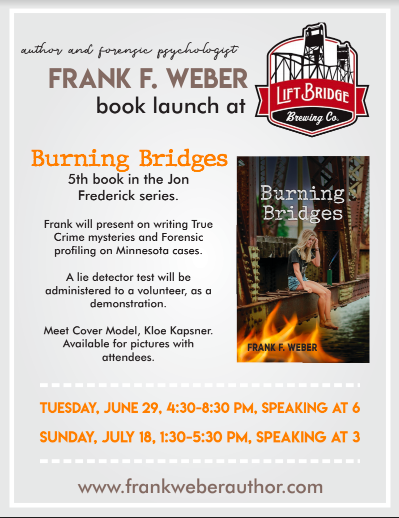



 Frank signing books at Beagle and Wolf Bookstore in Park Rapids.
Frank signing books at Beagle and Wolf Bookstore in Park Rapids.

 Stephanie Hummer Ohio State University In early March of 1994, at about 2:30 a.m. Stephanie was walking through an alley close to her dorm to a friend’s place when she disappeared. She was abducted on Pearl Alley, East of Ohio State campus, where she was a freshman. On March 6, 1994, her partially clothed body was discovered face down in field, 4 miles from her dorm. She had been sexually assaulted and bludgeoned in the back of her head.
Stephanie Hummer Ohio State University In early March of 1994, at about 2:30 a.m. Stephanie was walking through an alley close to her dorm to a friend’s place when she disappeared. She was abducted on Pearl Alley, East of Ohio State campus, where she was a freshman. On March 6, 1994, her partially clothed body was discovered face down in field, 4 miles from her dorm. She had been sexually assaulted and bludgeoned in the back of her head.  Pearl Alley by Ohio State University People with above average needs for attention can really hamper investigations. A seminary student, Anton Corian, confessed to a friend that he killed Stephanie. Investigators mic the friend and record a conversation in which Anton states again he killed Stephanie. Anton is pulled in for an interrogation. He tells investigators he was “running his mouth to a friend” based on information he pulled off of the news. Anton was familiar with the area as it was an area frequented by prostitutes. DNA testing indicates Anton was not the man who raped and killed Stephanie. (Strike 1 for investigators.)
Pearl Alley by Ohio State University People with above average needs for attention can really hamper investigations. A seminary student, Anton Corian, confessed to a friend that he killed Stephanie. Investigators mic the friend and record a conversation in which Anton states again he killed Stephanie. Anton is pulled in for an interrogation. He tells investigators he was “running his mouth to a friend” based on information he pulled off of the news. Anton was familiar with the area as it was an area frequented by prostitutes. DNA testing indicates Anton was not the man who raped and killed Stephanie. (Strike 1 for investigators.) Picture used on Unusual Suspects show on the Investigative channel.
Picture used on Unusual Suspects show on the Investigative channel.Rodney Hastings had a history of assaults by the Ohio State University campus, including a prior conviction for kidnapping and attempted rape. It was discovered Rodney would take a work van and drive along the college stopping women. He’d pretend to be a police officer and pat women down for his gratification. Rodney also picked up prostitutes in the area. Investigators discover Rodney’s former significant other lived in the same apartment complex as Stephanie Hastings. Rodney had been to the apartment complex frequently. This appears to be a solid lead. Rodney quickly requests an attorney. A search of his van finds no traces of Stephanie. A court ordered DNA test indicates Rodney Hastings was not the man who raped Stephanie. (Strike 2 for investigators.)
 In Youngstown Supermax prison in Ohio, 2 of every 3 inmates is a gang member. (Over 8000 total, with the largest gang being the Heartless Felons) Jermaine Espinoza calls investigators from a nearby prison. Jermaine was an inmate and an assistant GED instructor at the prison. He tells investigators he’s working with an inmate, Franklin Zaiden, who admitted killing Stephanie. Zaiden is incarcerated on a rape charge. Zaiden was a free man, when Stephanie was murdered. He was also attending drug counseling, just down the street from where Stephanie was murdered. Jermaine gives investigators a letter written by Zaiden admitting to the murder. This lead was promising as new DNA testing information indicated the rapist and killer was African American and Zaiden fits the bill. When detectives interview Franklin Zaiden, he admits to writing the letter. He stated Jermaine claimed to have a movie deal, and he wanted Zaiden to write this letter to show he could play the role of the killer. Jermaine was setting Zaiden up, in hope of receiving an early release. DNA testing was performed and Franklin Zaiden is not the man who raped and killed Stephanie. (Strike 3 for investigators.)
In Youngstown Supermax prison in Ohio, 2 of every 3 inmates is a gang member. (Over 8000 total, with the largest gang being the Heartless Felons) Jermaine Espinoza calls investigators from a nearby prison. Jermaine was an inmate and an assistant GED instructor at the prison. He tells investigators he’s working with an inmate, Franklin Zaiden, who admitted killing Stephanie. Zaiden is incarcerated on a rape charge. Zaiden was a free man, when Stephanie was murdered. He was also attending drug counseling, just down the street from where Stephanie was murdered. Jermaine gives investigators a letter written by Zaiden admitting to the murder. This lead was promising as new DNA testing information indicated the rapist and killer was African American and Zaiden fits the bill. When detectives interview Franklin Zaiden, he admits to writing the letter. He stated Jermaine claimed to have a movie deal, and he wanted Zaiden to write this letter to show he could play the role of the killer. Jermaine was setting Zaiden up, in hope of receiving an early release. DNA testing was performed and Franklin Zaiden is not the man who raped and killed Stephanie. (Strike 3 for investigators.)And the case goes cold for over a decade…
A change in child support laws in Ohio solves the case. If a person falls behind in their child support, they can be convicted of a felony. And a person who is convicted of a felony, has to turn in a DNA sample.
Jonathan Gravely was a star track and football star from Whetstone High School which was close to the Ohio State campus. In 2006, Gravely is 35 years old and now has a good paying job at a factory. At the time, Gravely was considered a generally good person who had no problems with the law--until he’s arrested for failure to pay child support for one of his children.
 Jonathan Gravely’s DNA is taken and entered the CODIS system. It matches the DNA of the rapist and killer of Stephanie Hummer. Gravely had never been a suspect in the initial investigation. Investigators say they did thousands of interviews but had no idea he existed. They say the crime was random, that Gravely did not know Stephanie. Jonathan Gravely plead guilty and made this statement: "I have not lived a life of crime, but what I did on that date was inexcusable. I want to apologize to the Hummer family for what I've done."
Jonathan Gravely’s DNA is taken and entered the CODIS system. It matches the DNA of the rapist and killer of Stephanie Hummer. Gravely had never been a suspect in the initial investigation. Investigators say they did thousands of interviews but had no idea he existed. They say the crime was random, that Gravely did not know Stephanie. Jonathan Gravely plead guilty and made this statement: "I have not lived a life of crime, but what I did on that date was inexcusable. I want to apologize to the Hummer family for what I've done." Even smart athletes can be abducted. Gravely claims he picked Stephanie up at a bar, and after they were together, she threatened to tell his partner about their relationship. He claimed he hit her and accidentally killed her. Investigators know this isn’t true. Stephanie didn’t go to a bar. She was walking home from a friend’s party when she was overpowered and abducted. To her credit, at one point she managed to escape and ran quite a distance before he finally ran her down and killed her.
Even smart athletes can be abducted. Gravely claims he picked Stephanie up at a bar, and after they were together, she threatened to tell his partner about their relationship. He claimed he hit her and accidentally killed her. Investigators know this isn’t true. Stephanie didn’t go to a bar. She was walking home from a friend’s party when she was overpowered and abducted. To her credit, at one point she managed to escape and ran quite a distance before he finally ran her down and killed her.  Be kind and look out for one another. We are all fortunate either by chance, or by someone looking out for us. We have a lot of young adults graduating. I encourage people to leave parties and bars in groups, and don’t be staring at your cell phone. If you set down a beverage, you don’t pick it up again. Be careful when and where you choose to walk. As a rule of thumb, walks along the water in cities are dangerous at night. I like this Denzel quote.
Be kind and look out for one another. We are all fortunate either by chance, or by someone looking out for us. We have a lot of young adults graduating. I encourage people to leave parties and bars in groups, and don’t be staring at your cell phone. If you set down a beverage, you don’t pick it up again. Be careful when and where you choose to walk. As a rule of thumb, walks along the water in cities are dangerous at night. I like this Denzel quote. Thanks for listening,
Thanks for listening,Frank
Unchained Melody by Allie Sherlock and Cuan Durkin (Righteous Brothers original) https://youtu.be/6uecFirb4T4




 Frank signing books at Beagle and Wolf Bookstore in Park Rapids.
Frank signing books at Beagle and Wolf Bookstore in Park Rapids.
Published on June 03, 2021 11:23
May 19, 2021
Band-aids for Bullets
A couple months ago, I wrote a blog pointing out that paying millions to victims of police shootings has no impact on the problem. Within 2 weeks Daunte Wright was shot. We need to come up with real solutions instead of playing this morbid lottery that costs families one member.  6-year-old Aniya Allen was shot in the head in Minneapolis. She was riding with her parents eating a happy meal in the backseat at the time.
6-year-old Aniya Allen was shot in the head in Minneapolis. She was riding with her parents eating a happy meal in the backseat at the time.
9-year-old Trinity Ottoson Smith was shot in the head last weekend while jumping on the trampoline at a birthday party by someone (who apparently didn’t care if he killed children). The shooter drove by and opened fire at the house. 10-year-old Ladavionne Garrett Jr. was shot in the head riding home in a car with his parents. Trinity Ottoson Smith
Trinity Ottoson Smith  Friends & family of Ladavionne Garrett Jr. at a prayer vigil for the 10-year-old boy. Black lives matter. They matter if the shooter was killed by a police officer and they matter if they are killed by someone from the neighborhood. So let’s please for once address the issue instead of offering band-aids, kissing the wound and pretending it’s better.
Friends & family of Ladavionne Garrett Jr. at a prayer vigil for the 10-year-old boy. Black lives matter. They matter if the shooter was killed by a police officer and they matter if they are killed by someone from the neighborhood. So let’s please for once address the issue instead of offering band-aids, kissing the wound and pretending it’s better.
The problem: Shootings in North Minneapolis in 2021 are up 150%. We have had a 6-year-old, a 9-year-old and a 10-year-old shot in the metro area in the last couple weeks by citizens. More than 550 people were wounded by gunfire in 2020. That represents more than a 100% increase over the tally in 2019. 99% were not shot by police officers. More than 80% of shooting victims were African American and 62% of people wounded or fatally shot were residents of Minneapolis. The shootings in North Minneapolis are up 150 % in 2021, with a reported 250 shots fired in this area, in one weekend. A bloody footprint on the sidewalk after an early-morning shooting in Minneapolis nightlife area. (Jerry Holt/AP) People in Brooklyn Center cheered police reform last night, after it was proposed they will prohibit arrests (only tickets and fines) for low-level offenses and use unarmed civilians to handle minor traffic violations. In one tense moment, a man said he didn't agree with having unarmed people pull over drivers. He then turned to Daunte Wright’s mother and said: "Your son was killed, not because of a traffic stop in my mind. But because he had warrants." In the media this man was criticized for being disrespectful to Daunte Wright’s family and people were applauded for guiding him away from the microphone. I wasn’t at the meeting, so I don’t know exactly how it was said, but the reality is he was correct. If this had been said at any gathering in honor of Daunte Wright, it would be out of line. But it was stated at a meeting intended to change police policy.
A bloody footprint on the sidewalk after an early-morning shooting in Minneapolis nightlife area. (Jerry Holt/AP) People in Brooklyn Center cheered police reform last night, after it was proposed they will prohibit arrests (only tickets and fines) for low-level offenses and use unarmed civilians to handle minor traffic violations. In one tense moment, a man said he didn't agree with having unarmed people pull over drivers. He then turned to Daunte Wright’s mother and said: "Your son was killed, not because of a traffic stop in my mind. But because he had warrants." In the media this man was criticized for being disrespectful to Daunte Wright’s family and people were applauded for guiding him away from the microphone. I wasn’t at the meeting, so I don’t know exactly how it was said, but the reality is he was correct. If this had been said at any gathering in honor of Daunte Wright, it would be out of line. But it was stated at a meeting intended to change police policy.  Demonstrators protesting the killing of Daunte Wright in Brooklyn Center, Minn., on April 12.Credit...Joshua Rashaad McFadden for The New York Times “The way to right wrongs is to turn the light of truth upon them.” Ida B. Wells-Barnett
Demonstrators protesting the killing of Daunte Wright in Brooklyn Center, Minn., on April 12.Credit...Joshua Rashaad McFadden for The New York Times “The way to right wrongs is to turn the light of truth upon them.” Ida B. Wells-Barnett
If we’re going to honestly resolve issues, we have to start with the truth. The initial reports suggesting Daunte was pulled over for having an air freshener hanging on his mirror were not true. He was pulled over for having expired tabs. And if that was it, he would have been given a ticket and released. Now I want to make it clear—Daunte never should have been shot. His death is a tragedy. When the officers saw Daunte had an outstanding warrant, they tried to arrest him, he tried taking off in his vehicle, and he was tragically shot. The reality is that Daunte was going to be confronted somewhere on that outstanding warrant. He never should have been shot and my heart goes out to his family. But changing traffic policies doesn’t resolve the problem. Are we going to not arrest people for outstanding warrants? Maybe the Brooklyn Center decision will ease some of the tension between police and citizens. I hope so. But it won’t resolve the larger problem.
The problem: Good intention does not equal good problem solving.
Kobie Dimock-Heisler's grandfather called police in 2019 after Kobie, who had autism, grabbed a knife, and his grandfather feared he might hurt himself. The police didn’t know to handle an autistic person, and didn’t calm Kobie down. Kobie went after his grandmother with the knife and two Brooklyn Center police officers fired six shots at 21-year-old Kobe Dimock-Heisler killing him. His family has been active in making sure officers have 4 hours of training in autism—and this is great! Here’s the problem. Last year I was asked to provide 8 hours of training to law enforcement officers. 4 hours had to be in autism, and the remaining 4 hours had to address domestic abuse, sexual victimization, sexual offending, depression, suicide, substance abuse, bipolar disorder and schizophrenia. (Not exactly the perfect balance.)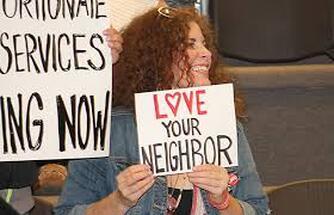
 Solutions:
Solutions:
1. Protect families. Take the tax burden off of the middle and working class.
I’m tired of hearing that politicians are pro-family when they don’t really protect families. MN legislature is proud of not increasing taxes. That’s good, but why are middle class families paying 30% of their income in taxes when billionaires and millionaires are paying about 20% of their income in taxes. I’m not even asking them to pay more. How about just being fair? If it was fair, working class and middle class families would have more money. Our legislature has refused to address this and it’s gotten worse every year for 40 years.
 2. Encourage and fund more positive interactions between police and community members. Build homes, like the one in St. Cloud, in poor areas to encourage the police and community to work together.
2. Encourage and fund more positive interactions between police and community members. Build homes, like the one in St. Cloud, in poor areas to encourage the police and community to work together. 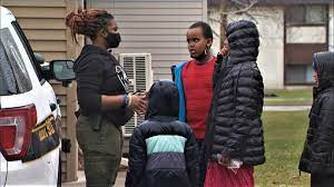 We need this…
We need this… 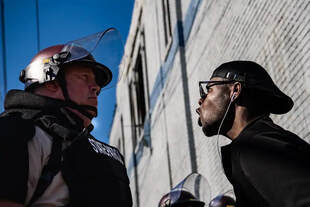 not this 3. Tragedies create learning opportunities. Use them.
not this 3. Tragedies create learning opportunities. Use them.
After the riots in Minneapolis we should have brought teens in from every community in Minnesota to help clean up the mess so they could learn the work needed to develop a community. Every flood, every tornado, provides an opportunity to teach community service.

 I agree with this guy! St. Paul Mayor Melvin Carter addressed the school, buildings and homes hit by gunfire -- saying the generational cycles of trauma, despair, and anxiety need to be stopped and replaced with opportunity and investment.
I agree with this guy! St. Paul Mayor Melvin Carter addressed the school, buildings and homes hit by gunfire -- saying the generational cycles of trauma, despair, and anxiety need to be stopped and replaced with opportunity and investment.
4. Commit to a serious change.
Everyone says we need to create opportunities. So let’s actually create one. My suggestion is go into a poor area and invest in education to provide computer programming training to students from early on. We have an incredible demand for this work in the U.S. and because we can’t fill the positions our tech companies go to China when they want to expand. This doesn’t mean that everyone in those schools would have to be a computer programmer. It would mean that everyone would have a professional job with benefits to fall back on if other efforts failed. More opportunities, means less crime and more children growing up to be amazing women and men! Thanks for listening,
Thanks for listening,
Frank
Do I have all the answers? Obviously not. But let’s try something new…
The book openings are starting up and I’m excited!



 6-year-old Aniya Allen was shot in the head in Minneapolis. She was riding with her parents eating a happy meal in the backseat at the time.
6-year-old Aniya Allen was shot in the head in Minneapolis. She was riding with her parents eating a happy meal in the backseat at the time.9-year-old Trinity Ottoson Smith was shot in the head last weekend while jumping on the trampoline at a birthday party by someone (who apparently didn’t care if he killed children). The shooter drove by and opened fire at the house. 10-year-old Ladavionne Garrett Jr. was shot in the head riding home in a car with his parents.
 Trinity Ottoson Smith
Trinity Ottoson Smith  Friends & family of Ladavionne Garrett Jr. at a prayer vigil for the 10-year-old boy. Black lives matter. They matter if the shooter was killed by a police officer and they matter if they are killed by someone from the neighborhood. So let’s please for once address the issue instead of offering band-aids, kissing the wound and pretending it’s better.
Friends & family of Ladavionne Garrett Jr. at a prayer vigil for the 10-year-old boy. Black lives matter. They matter if the shooter was killed by a police officer and they matter if they are killed by someone from the neighborhood. So let’s please for once address the issue instead of offering band-aids, kissing the wound and pretending it’s better. The problem: Shootings in North Minneapolis in 2021 are up 150%. We have had a 6-year-old, a 9-year-old and a 10-year-old shot in the metro area in the last couple weeks by citizens. More than 550 people were wounded by gunfire in 2020. That represents more than a 100% increase over the tally in 2019. 99% were not shot by police officers. More than 80% of shooting victims were African American and 62% of people wounded or fatally shot were residents of Minneapolis. The shootings in North Minneapolis are up 150 % in 2021, with a reported 250 shots fired in this area, in one weekend.
 A bloody footprint on the sidewalk after an early-morning shooting in Minneapolis nightlife area. (Jerry Holt/AP) People in Brooklyn Center cheered police reform last night, after it was proposed they will prohibit arrests (only tickets and fines) for low-level offenses and use unarmed civilians to handle minor traffic violations. In one tense moment, a man said he didn't agree with having unarmed people pull over drivers. He then turned to Daunte Wright’s mother and said: "Your son was killed, not because of a traffic stop in my mind. But because he had warrants." In the media this man was criticized for being disrespectful to Daunte Wright’s family and people were applauded for guiding him away from the microphone. I wasn’t at the meeting, so I don’t know exactly how it was said, but the reality is he was correct. If this had been said at any gathering in honor of Daunte Wright, it would be out of line. But it was stated at a meeting intended to change police policy.
A bloody footprint on the sidewalk after an early-morning shooting in Minneapolis nightlife area. (Jerry Holt/AP) People in Brooklyn Center cheered police reform last night, after it was proposed they will prohibit arrests (only tickets and fines) for low-level offenses and use unarmed civilians to handle minor traffic violations. In one tense moment, a man said he didn't agree with having unarmed people pull over drivers. He then turned to Daunte Wright’s mother and said: "Your son was killed, not because of a traffic stop in my mind. But because he had warrants." In the media this man was criticized for being disrespectful to Daunte Wright’s family and people were applauded for guiding him away from the microphone. I wasn’t at the meeting, so I don’t know exactly how it was said, but the reality is he was correct. If this had been said at any gathering in honor of Daunte Wright, it would be out of line. But it was stated at a meeting intended to change police policy.  Demonstrators protesting the killing of Daunte Wright in Brooklyn Center, Minn., on April 12.Credit...Joshua Rashaad McFadden for The New York Times “The way to right wrongs is to turn the light of truth upon them.” Ida B. Wells-Barnett
Demonstrators protesting the killing of Daunte Wright in Brooklyn Center, Minn., on April 12.Credit...Joshua Rashaad McFadden for The New York Times “The way to right wrongs is to turn the light of truth upon them.” Ida B. Wells-BarnettIf we’re going to honestly resolve issues, we have to start with the truth. The initial reports suggesting Daunte was pulled over for having an air freshener hanging on his mirror were not true. He was pulled over for having expired tabs. And if that was it, he would have been given a ticket and released. Now I want to make it clear—Daunte never should have been shot. His death is a tragedy. When the officers saw Daunte had an outstanding warrant, they tried to arrest him, he tried taking off in his vehicle, and he was tragically shot. The reality is that Daunte was going to be confronted somewhere on that outstanding warrant. He never should have been shot and my heart goes out to his family. But changing traffic policies doesn’t resolve the problem. Are we going to not arrest people for outstanding warrants? Maybe the Brooklyn Center decision will ease some of the tension between police and citizens. I hope so. But it won’t resolve the larger problem.
The problem: Good intention does not equal good problem solving.
Kobie Dimock-Heisler's grandfather called police in 2019 after Kobie, who had autism, grabbed a knife, and his grandfather feared he might hurt himself. The police didn’t know to handle an autistic person, and didn’t calm Kobie down. Kobie went after his grandmother with the knife and two Brooklyn Center police officers fired six shots at 21-year-old Kobe Dimock-Heisler killing him. His family has been active in making sure officers have 4 hours of training in autism—and this is great! Here’s the problem. Last year I was asked to provide 8 hours of training to law enforcement officers. 4 hours had to be in autism, and the remaining 4 hours had to address domestic abuse, sexual victimization, sexual offending, depression, suicide, substance abuse, bipolar disorder and schizophrenia. (Not exactly the perfect balance.)

 Solutions:
Solutions:1. Protect families. Take the tax burden off of the middle and working class.
I’m tired of hearing that politicians are pro-family when they don’t really protect families. MN legislature is proud of not increasing taxes. That’s good, but why are middle class families paying 30% of their income in taxes when billionaires and millionaires are paying about 20% of their income in taxes. I’m not even asking them to pay more. How about just being fair? If it was fair, working class and middle class families would have more money. Our legislature has refused to address this and it’s gotten worse every year for 40 years.

 2. Encourage and fund more positive interactions between police and community members. Build homes, like the one in St. Cloud, in poor areas to encourage the police and community to work together.
2. Encourage and fund more positive interactions between police and community members. Build homes, like the one in St. Cloud, in poor areas to encourage the police and community to work together.  We need this…
We need this…  not this 3. Tragedies create learning opportunities. Use them.
not this 3. Tragedies create learning opportunities. Use them.After the riots in Minneapolis we should have brought teens in from every community in Minnesota to help clean up the mess so they could learn the work needed to develop a community. Every flood, every tornado, provides an opportunity to teach community service.


 I agree with this guy! St. Paul Mayor Melvin Carter addressed the school, buildings and homes hit by gunfire -- saying the generational cycles of trauma, despair, and anxiety need to be stopped and replaced with opportunity and investment.
I agree with this guy! St. Paul Mayor Melvin Carter addressed the school, buildings and homes hit by gunfire -- saying the generational cycles of trauma, despair, and anxiety need to be stopped and replaced with opportunity and investment.4. Commit to a serious change.
Everyone says we need to create opportunities. So let’s actually create one. My suggestion is go into a poor area and invest in education to provide computer programming training to students from early on. We have an incredible demand for this work in the U.S. and because we can’t fill the positions our tech companies go to China when they want to expand. This doesn’t mean that everyone in those schools would have to be a computer programmer. It would mean that everyone would have a professional job with benefits to fall back on if other efforts failed. More opportunities, means less crime and more children growing up to be amazing women and men!
 Thanks for listening,
Thanks for listening,Frank
Do I have all the answers? Obviously not. But let’s try something new…
The book openings are starting up and I’m excited!




Published on May 19, 2021 17:58
May 6, 2021
Ashton Kutcher’s Grammy party date was murdered by a serial killer…
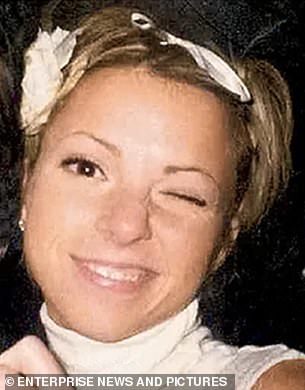
 Ashley Ellerin was Initially raised in Somerset, New Jersey. In high school, the family moved to Los Altos, California. Ashley was confident and adjusted to the move well. A friend of the small-town girl from Northern California described Ashley Ellerin as “beautiful,” “fun,” and “spontaneous.”
Ashley Ellerin was Initially raised in Somerset, New Jersey. In high school, the family moved to Los Altos, California. Ashley was confident and adjusted to the move well. A friend of the small-town girl from Northern California described Ashley Ellerin as “beautiful,” “fun,” and “spontaneous.”
After high school, she moved to Los Angeles and dated Vin Diesel and actor Denny Kirkwood. (Pictured below)
 On the February 1, 2001, Ashley drove her father to the airport. After she returned home, Mark Durbin visited Ashley to fix a ceiling fan in her home. Ashley was having some home renovations done. Durbin testified that he was intimate with Ashley at about 7:20 on the evening she was murdered, but claimed he didn’t kill her. Mark was an aspiring actor. Durbin stated he was out the door at 8:15, minutes before Ashley was murdered. This is suspicious, but there is no evidence linking him to Ashley’s murder.
On the February 1, 2001, Ashley drove her father to the airport. After she returned home, Mark Durbin visited Ashley to fix a ceiling fan in her home. Ashley was having some home renovations done. Durbin testified that he was intimate with Ashley at about 7:20 on the evening she was murdered, but claimed he didn’t kill her. Mark was an aspiring actor. Durbin stated he was out the door at 8:15, minutes before Ashley was murdered. This is suspicious, but there is no evidence linking him to Ashley’s murder.Ashley received a call from Ashton Kutcher at 8:24 p.m. He had invited her to a Grammys after-party with him. Ashton told her he’d pick her up at 10:20. p.m.
Investigators interviewed people in Ashley’s neighborhood. A man walking his dog heard a shrill scream from Ashley’s home at 8:30 p.m. (which gives Ashton a solid alibi).
 Ashley Ellerin was a student at L.A.’s Fashion Institute of Design and Merchandising (pictured below) when she met Ashton Kutcher.
Ashley Ellerin was a student at L.A.’s Fashion Institute of Design and Merchandising (pictured below) when she met Ashton Kutcher. When Ashton showed up at Ashley’s Hollywood home around 10:45 pm, his knock at her door went unanswered. Ashton was late. He peered in the window and saw what he thought to be a puddle of spilled red wine on the floor. (Ashley had thrown a party the previous night.) Assuming she was mad at him for being late, Ashton finally left.
When Ashton showed up at Ashley’s Hollywood home around 10:45 pm, his knock at her door went unanswered. Ashton was late. He peered in the window and saw what he thought to be a puddle of spilled red wine on the floor. (Ashley had thrown a party the previous night.) Assuming she was mad at him for being late, Ashton finally left.
 Ashton was a rising star in “That 70’s Show” at the time.
Ashton was a rising star in “That 70’s Show” at the time.The coroner’s report indicated Ashley had been stabbed 47 times, some of the wounds so deep they almost went all the way through her. (Suggesting the killer was strong.) Her throat was cut almost decapitating her. The stab wounds go from left to right, suggesting the killer was left-handed. There was blood all over, and no effort to clean up the mess.
Investigators were told by Ashley’s friends that a man named Michael Gargiulo had been creeping around, who claimed to be a furnace man. He had walked into a party at Ashley’s home uninvited and didn’t speak to people at the party. He just sat on the couch and watched Ashley. Michael lived down the street from Ashley and moved out of the area shortly after Ashley’s murder.
 Tricia PacaccioWhile investigators were gathering information on Gargiulo, they received a call from an investigator in Chicago regarding the 10-year-old cold case murder of Tricia Pacaccio. Both Ashley and Tricia’s bodies were posed in a seductive manner after being stabbed to death. Tricia was a popular high school student at Glenbrook South High School in Chicago and was only 17 years old when she was murdered. Her friend Karen Isenberg Jones described Tricia: "She was a beautiful person, inside and out. She was genuinely nice to everybody.” Tricia had gone out with her friends on August 13, 1993 for a scavenger hunt, and had left at 1:00 a.m. to drop a friend off on her way back home. She didn’t make it inside, however: Her father found her body the next morning on their steps with the door key in her hand. Her plan was to attend Purdue University in September to study engineering and environmental issues.
Tricia PacaccioWhile investigators were gathering information on Gargiulo, they received a call from an investigator in Chicago regarding the 10-year-old cold case murder of Tricia Pacaccio. Both Ashley and Tricia’s bodies were posed in a seductive manner after being stabbed to death. Tricia was a popular high school student at Glenbrook South High School in Chicago and was only 17 years old when she was murdered. Her friend Karen Isenberg Jones described Tricia: "She was a beautiful person, inside and out. She was genuinely nice to everybody.” Tricia had gone out with her friends on August 13, 1993 for a scavenger hunt, and had left at 1:00 a.m. to drop a friend off on her way back home. She didn’t make it inside, however: Her father found her body the next morning on their steps with the door key in her hand. Her plan was to attend Purdue University in September to study engineering and environmental issues.When the Chicago detectives said they we’re looking for a guy named Mike Gargiulo, the LA investigators were shocked. Even though Tricia had been murdered in 1993, DNA testing in 2003 discovered Tricia had fought her attacker and Gargiulo’s DNA was under her fingernails. Gargiulo lived in the neighborhood and was an acquaintance of Tricia’s older brother.
What they discovered about Mike Gargiulo was disturbing. He was a left-handed boxer with a hot temper. He handcuffed a high school girlfriend and raped her. He threw his sister on a table, breaking it, and had thrown his father through a window. Mike is pictured below with a young woman he raped on a date. (Her picture, to the left, has appeared with an interview in a published news article, otherwise I wouldn’t print it.) Despite the evidence against Gargiulo, it was determined it was not enough evidence to prosecute him, so he was released.
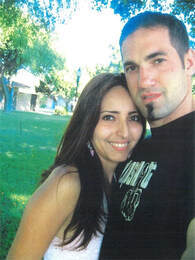
 Mario Bruno (mother of 4)
Mario Bruno (mother of 4)
 The Attacks Continue
The Attacks ContinueTwo years after the DNA match, on the night of December 1, 2005, a killer climbed through the kitchen window of an apartment in El Monte, a working-class suburb of L.A. The young woman who lived there, an aspiring model named Maria Bruno, had reported a “weird guy” had been watching her. Maria had separated from her husband, but they had gone out to eat together the night before her murder and he had returned to pick her up the next morning.
The intruder stabbed Bruno 17 times. As with the Ellerin case, the killer appeared to have posed Bruno’s body. The L.A. County Sheriff’s Department found a blue medical bootie outside Bruno’s apartment, but at the time, they couldn’t connect it to a suspect. They did discover that Michael Gargiulo lived across the alley from Maria and had a direct view of her door from his apartment.

 Pictures of Michelle Murphy’s bathroom, and cut and bloodied hands after the attack, were shared with the jury.
Pictures of Michelle Murphy’s bathroom, and cut and bloodied hands after the attack, were shared with the jury.Michelle Murphy becomes a hero! In April 2008, Michelle Murphy, a petite, 28-year-old awoke sometime after midnight to a man straddling her body, stabbing her in the chest. She grabbed the blade, the steel slicing her palms. She kicked wildly at the man, her blood-slicked body making it hard for him to hold her. At some point, the man cut himself. Michelle kicked the attacker in the chest. He fell against the wall. “I’m sorry,” he said, staggering out. Michelle identifies her neighbor, Michael Gargiulo, as her attacker. The DNA collected from the blood left at the scene belonged to Gargiulo. He was arrested on June 6, 2008. A bag with some tools and blue medical booties were found in his car.
 Michael Garguilo has fired numerous attorneys, delaying court proceedings. The press dubs him “The Hollywood Ripper,” the “Chiller Killer” and the “Boy Next Door Killer.” Michelle Murphy was able to point directly at Garguilo and identify her attacker in court. Garguilo was convicted of murder and the jury is pushing for the death sentence. He is scheduled to be sentenced in July of 2021.
Michael Garguilo has fired numerous attorneys, delaying court proceedings. The press dubs him “The Hollywood Ripper,” the “Chiller Killer” and the “Boy Next Door Killer.” Michelle Murphy was able to point directly at Garguilo and identify her attacker in court. Garguilo was convicted of murder and the jury is pushing for the death sentence. He is scheduled to be sentenced in July of 2021.
Thank you, Michelle, for your heroic fight! You have saved others from being victims.

 I appreciate people spreading news about my books. On April 30, 2021 the Pine Journal featured Lying Close. The Bad Habit events were a tremendous success, with both days selling out of tickets. Thank you Bad Habit for being a great supporter of a local author! I am looking to additional events…
I appreciate people spreading news about my books. On April 30, 2021 the Pine Journal featured Lying Close. The Bad Habit events were a tremendous success, with both days selling out of tickets. Thank you Bad Habit for being a great supporter of a local author! I am looking to additional events…Thanks for listening,
Frank
 Saturday, May 8, 2021, Frank will be signing books at the Spring Fling in downtown Brainerd 11:00 a.m. to 1:00 p.m. Frank will be in front of CatTales Books & Gifts 609 Laurel St, Brainerd, Minnesota.
Saturday, May 8, 2021, Frank will be signing books at the Spring Fling in downtown Brainerd 11:00 a.m. to 1:00 p.m. Frank will be in front of CatTales Books & Gifts 609 Laurel St, Brainerd, Minnesota. Every once in a while, I hear a line or two in a song that runs through my head over and over, and the best version of this song wasn’t the Mills Brothers, but instead Clarence Henry (in my opinion). This is song is for everyone who’s said something they wish they wouldn’t have said to someone you love—“a hasty word you can’t recall…”
You always hurt the one you love, the one you shouldn’t hurt at all.
You always take the sweetest rose, and crush it ‘til the petals fall.
You always break the kindest heart, with a hasty word you can’t recall
So if I broke your heart last night, it’s because I love you most of all…
Clarence Henry, You Always Hurt the One You Love
Ryan Gosling singing the same tune
Published on May 06, 2021 18:07
April 22, 2021
St. Cloud Police deserve a shout out for their creative racial/police unification program!
 The St. Cloud police department purchased a home in a Somali neighborhood in St. Cloud and they hold book club & pizza night. They’ve hosted street basketball tournaments and a variety of other events in the area. The result is people in the neighborhood befriending the officers and sharing with the officers on a first name basis. The crime rate in this area has dropped significantly.
The St. Cloud police department purchased a home in a Somali neighborhood in St. Cloud and they hold book club & pizza night. They’ve hosted street basketball tournaments and a variety of other events in the area. The result is people in the neighborhood befriending the officers and sharing with the officers on a first name basis. The crime rate in this area has dropped significantly.

 And more good news…
And more good news…A couple of blogs ago, I expressed frustration about a court ruling by the Supreme Court in Minnesota that suggested an intoxicated victim of rape can’t be considered mentally incapacitated if she wasn’t forced to consume the alcohol/drug. This basically makes anyone leaving a bar intoxicated a target for a rapist. A bipartisan group of Republicans and Democrats are now getting together and changing the statute to protect the rights of anyone who doesn’t consent to sex. Democrats and Republicans working together…, novel idea!
 Protesters in Brooklyn Center after the shooting of Daunte Wright.Was Brooklyn Center founded by a Klan member?
Protesters in Brooklyn Center after the shooting of Daunte Wright.Was Brooklyn Center founded by a Klan member?
Yes, but it might not be that simple. Earl Brown founded Brooklyn Center where he once owned a large farm (750 acres) that he gave to the University of Minnesota in 1949. I did not know the man, so I’m simply reporting what I found. Earl Brown is described in past reports as a gentleman and a man of integrity. He had a passion for Morgan and Belgian horses. He raised them and showed them. He also had Great Danes dogs. Earl Brown started the Minnesota State High Patrol and was elected Hennepin county Sheriff. Brown died in 1963 at age 83.
Ku Klux Klan activity began in Minnesota in 1921 and grew over the ensuing years. By 1923 Minnesota had a reported 51 chapters and over 30,000 members (although many were not active members). The Klan voiced an intolerance for Catholics, German and Jewish immigrants, and African Americans whom they viewed as “outsiders.”
 Earl and Gwen BrownIn 1923, Sheriff Earl Brown testified before a grand jury he joined the Ku Klux Klan to gather inside information as he recognized they were becoming a force. Certainly, there was a need to have inside information. This is what I found. I’m not trying to make it sound better or worse. I’m an advocate of the truth.
Earl and Gwen BrownIn 1923, Sheriff Earl Brown testified before a grand jury he joined the Ku Klux Klan to gather inside information as he recognized they were becoming a force. Certainly, there was a need to have inside information. This is what I found. I’m not trying to make it sound better or worse. I’m an advocate of the truth.




 Finally, the Bad Habit book event was a tremendous success. The tickets were all taken, the seats were spaced out and full, and lots of books were sold! Thank you, everyone, for your kind support! I am returning on May 3, for anyone who missed it. You can stop in and sign up for a seat at Bad Habit Brewing in St. Joseph.
Finally, the Bad Habit book event was a tremendous success. The tickets were all taken, the seats were spaced out and full, and lots of books were sold! Thank you, everyone, for your kind support! I am returning on May 3, for anyone who missed it. You can stop in and sign up for a seat at Bad Habit Brewing in St. Joseph.Thanks for listening,
Frank

Published on April 22, 2021 05:25
April 15, 2021
Ruby Bridges
When I watch the evidence of the tragedy of the Daunte Wright shooting I think about the fear of a young man who was being asked to face consequences for a misdemeanor charge, and a police officer, Kimberly Potter, afraid of losing control of the situation. The result of all of this fear is a loss of life for the man, and the loss of a career and criminal charges for the woman who accidently fired her gun instead of her taser. Can a taser be mistaken for a gun? Yes. It’s happened before, in Minneapolis, although I believe this was the first time someone was killed as a result. It’s easy to be angry about Daunte’s death. I feel it. We all are angry, to varying degrees. But anger doesn't solve anything. If you understand brain chemistry, we think less clearly when angry. Just as we think less clearly when we’re afraid. 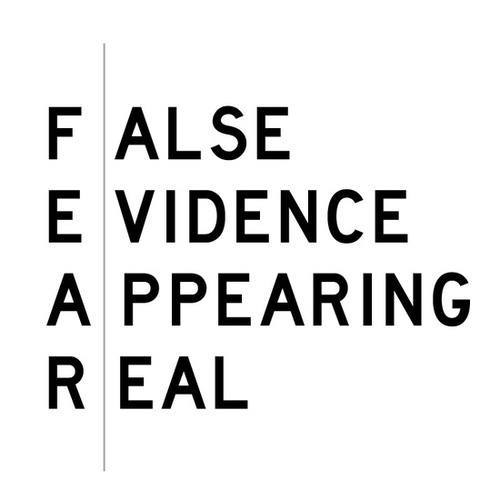 It’s not fair for me to say more without further information. With another life lost, let’s look back at life in the U.S. 50 years ago.
It’s not fair for me to say more without further information. With another life lost, let’s look back at life in the U.S. 50 years ago.
Ruby Ridges and racism 60 years ago
Ruby Bridges was the eldest of five children born to Abon and Lucille Bridges. As a child, she took care of her younger siblings. She enjoyed playing jump rope, softball and climbing trees. Ruby Bridges and marshals leaving William Frantz Elementary School, New Orleans, 1960. She was escorted both to and from the school while segregationist protests continued.Ruby Bridges was one of six black children in New Orleans to pass the test that determined whether they could go to the all-white William Frantz Elementary School. Two of the six decided to stay at their old school. Bridges went to Frantz by herself, and three children were transferred to McDonogh School.
Ruby Bridges and marshals leaving William Frantz Elementary School, New Orleans, 1960. She was escorted both to and from the school while segregationist protests continued.Ruby Bridges was one of six black children in New Orleans to pass the test that determined whether they could go to the all-white William Frantz Elementary School. Two of the six decided to stay at their old school. Bridges went to Frantz by herself, and three children were transferred to McDonogh School.
 Ruby Bridges was six-years-old when she became the first African-American child to integrate a white Southern elementary school on November 14, 1960. She was escorted to class by her mother and U.S. marshals due to violent mobs. Bridges' bravery paved the way for continued Civil Rights action, and she's shared her story with future generations in educational forums. White parents pulled their own children out of school. Only one teacher agreed to work with Ruby. Barbra Henry taught Ruby alone for over a year, "as if she were teaching a whole class."
Ruby Bridges was six-years-old when she became the first African-American child to integrate a white Southern elementary school on November 14, 1960. She was escorted to class by her mother and U.S. marshals due to violent mobs. Bridges' bravery paved the way for continued Civil Rights action, and she's shared her story with future generations in educational forums. White parents pulled their own children out of school. Only one teacher agreed to work with Ruby. Barbra Henry taught Ruby alone for over a year, "as if she were teaching a whole class."
 Ruby Bridges as a child and an adult.On the second day of protests, a white student broke the boycott and entered the school. A 34-year-old Methodist minister, Lloyd Anderson Foreman, walked his 5-year-old daughter Pam through the angry mob. A few days later, other white parents began bringing their children, and the protests began to subside. Ruby remained the only child in her class, until the following year. Every morning, as Bridges walked to school, one woman would threaten to poison her, while another held up a black baby doll in a coffin. U.S. Marshals dispatched by President Eisenhower oversaw her safety and allowed Ruby to eat only the food that she brought from home.
Ruby Bridges as a child and an adult.On the second day of protests, a white student broke the boycott and entered the school. A 34-year-old Methodist minister, Lloyd Anderson Foreman, walked his 5-year-old daughter Pam through the angry mob. A few days later, other white parents began bringing their children, and the protests began to subside. Ruby remained the only child in her class, until the following year. Every morning, as Bridges walked to school, one woman would threaten to poison her, while another held up a black baby doll in a coffin. U.S. Marshals dispatched by President Eisenhower oversaw her safety and allowed Ruby to eat only the food that she brought from home.
 Norman Rockwell painting of Ruby Bridges titled, “The Problem We All Live With.”Child Psychiatrist Robert Coles volunteered to provide counseling to Bridges during her first year at Frantz. He met with her weekly in the Bridges home, later writing a children's book, The Story of Ruby Bridges, to acquaint other children with Bridges' story. Coles donated the royalties from the sale of that book to provide money for school supplies for impoverished New Orleans school children.
Norman Rockwell painting of Ruby Bridges titled, “The Problem We All Live With.”Child Psychiatrist Robert Coles volunteered to provide counseling to Bridges during her first year at Frantz. He met with her weekly in the Bridges home, later writing a children's book, The Story of Ruby Bridges, to acquaint other children with Bridges' story. Coles donated the royalties from the sale of that book to provide money for school supplies for impoverished New Orleans school children.

 The Bridges family suffered for their decision to send her to William Frantz Elementary: her father lost his job as a gas station attendant. The grocery store would no longer let them shop there. Ruby's grandparents, who were sharecroppers, were turned off their land. Ruby Bridges noted that many others in the community, both black and white, showed support in a variety of ways.
The Bridges family suffered for their decision to send her to William Frantz Elementary: her father lost his job as a gas station attendant. The grocery store would no longer let them shop there. Ruby's grandparents, who were sharecroppers, were turned off their land. Ruby Bridges noted that many others in the community, both black and white, showed support in a variety of ways.

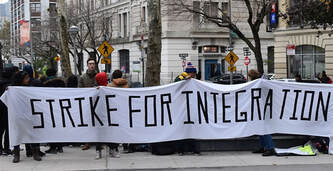 Some white families continued to send their children to Frantz despite the protests. A neighbor provided her father with a new job, and local people babysat, watched the house as protectors. The immaculate clothing she wore to school in those first weeks at Frantz was sent to her family by a relative of Dr. Coles. The Bridges family could never have afforded the dresses, socks, and shoes that are documented in photographs of her escort by U.S. Marshals to and from the school.
Some white families continued to send their children to Frantz despite the protests. A neighbor provided her father with a new job, and local people babysat, watched the house as protectors. The immaculate clothing she wore to school in those first weeks at Frantz was sent to her family by a relative of Dr. Coles. The Bridges family could never have afforded the dresses, socks, and shoes that are documented in photographs of her escort by U.S. Marshals to and from the school.
 Ruby Nell Bridges Hall is now an American civil rights activist.
Ruby Nell Bridges Hall is now an American civil rights activist.
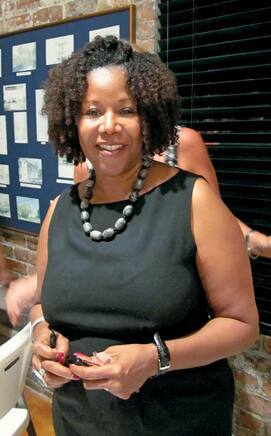 Religious faith itself can be psychologically protective. An 8-year-old African American girl, in the 1960’s, was one of the first to enter a previously all white school. She wrote about her experience walking past a mob of adults who were yelling insults: I was alone, and those people were screaming, and suddenly I saw God smiling and I smiled. A woman was standing there and she shouted at me, “Hey you little nigger, what are you smiling at?” I looked right at her face and I said, “At God.” Then she looked up at sky, and then she looked at me, and then she didn’t call me anymore names (quoted from Coles, in 1990).
Religious faith itself can be psychologically protective. An 8-year-old African American girl, in the 1960’s, was one of the first to enter a previously all white school. She wrote about her experience walking past a mob of adults who were yelling insults: I was alone, and those people were screaming, and suddenly I saw God smiling and I smiled. A woman was standing there and she shouted at me, “Hey you little nigger, what are you smiling at?” I looked right at her face and I said, “At God.” Then she looked up at sky, and then she looked at me, and then she didn’t call me anymore names (quoted from Coles, in 1990).

 I am an advocate of respect and responsibility. Treat everyone with respect and be responsible for your behavior. We can work through this. We’ve been through worse. We simply haven’t reached the finish line.
I am an advocate of respect and responsibility. Treat everyone with respect and be responsible for your behavior. We can work through this. We’ve been through worse. We simply haven’t reached the finish line.
Thanks for listening,
Frank
 It’s not fair for me to say more without further information. With another life lost, let’s look back at life in the U.S. 50 years ago.
It’s not fair for me to say more without further information. With another life lost, let’s look back at life in the U.S. 50 years ago.Ruby Ridges and racism 60 years ago
Ruby Bridges was the eldest of five children born to Abon and Lucille Bridges. As a child, she took care of her younger siblings. She enjoyed playing jump rope, softball and climbing trees.
 Ruby Bridges and marshals leaving William Frantz Elementary School, New Orleans, 1960. She was escorted both to and from the school while segregationist protests continued.Ruby Bridges was one of six black children in New Orleans to pass the test that determined whether they could go to the all-white William Frantz Elementary School. Two of the six decided to stay at their old school. Bridges went to Frantz by herself, and three children were transferred to McDonogh School.
Ruby Bridges and marshals leaving William Frantz Elementary School, New Orleans, 1960. She was escorted both to and from the school while segregationist protests continued.Ruby Bridges was one of six black children in New Orleans to pass the test that determined whether they could go to the all-white William Frantz Elementary School. Two of the six decided to stay at their old school. Bridges went to Frantz by herself, and three children were transferred to McDonogh School.
 Ruby Bridges was six-years-old when she became the first African-American child to integrate a white Southern elementary school on November 14, 1960. She was escorted to class by her mother and U.S. marshals due to violent mobs. Bridges' bravery paved the way for continued Civil Rights action, and she's shared her story with future generations in educational forums. White parents pulled their own children out of school. Only one teacher agreed to work with Ruby. Barbra Henry taught Ruby alone for over a year, "as if she were teaching a whole class."
Ruby Bridges was six-years-old when she became the first African-American child to integrate a white Southern elementary school on November 14, 1960. She was escorted to class by her mother and U.S. marshals due to violent mobs. Bridges' bravery paved the way for continued Civil Rights action, and she's shared her story with future generations in educational forums. White parents pulled their own children out of school. Only one teacher agreed to work with Ruby. Barbra Henry taught Ruby alone for over a year, "as if she were teaching a whole class."
 Ruby Bridges as a child and an adult.On the second day of protests, a white student broke the boycott and entered the school. A 34-year-old Methodist minister, Lloyd Anderson Foreman, walked his 5-year-old daughter Pam through the angry mob. A few days later, other white parents began bringing their children, and the protests began to subside. Ruby remained the only child in her class, until the following year. Every morning, as Bridges walked to school, one woman would threaten to poison her, while another held up a black baby doll in a coffin. U.S. Marshals dispatched by President Eisenhower oversaw her safety and allowed Ruby to eat only the food that she brought from home.
Ruby Bridges as a child and an adult.On the second day of protests, a white student broke the boycott and entered the school. A 34-year-old Methodist minister, Lloyd Anderson Foreman, walked his 5-year-old daughter Pam through the angry mob. A few days later, other white parents began bringing their children, and the protests began to subside. Ruby remained the only child in her class, until the following year. Every morning, as Bridges walked to school, one woman would threaten to poison her, while another held up a black baby doll in a coffin. U.S. Marshals dispatched by President Eisenhower oversaw her safety and allowed Ruby to eat only the food that she brought from home.
 Norman Rockwell painting of Ruby Bridges titled, “The Problem We All Live With.”Child Psychiatrist Robert Coles volunteered to provide counseling to Bridges during her first year at Frantz. He met with her weekly in the Bridges home, later writing a children's book, The Story of Ruby Bridges, to acquaint other children with Bridges' story. Coles donated the royalties from the sale of that book to provide money for school supplies for impoverished New Orleans school children.
Norman Rockwell painting of Ruby Bridges titled, “The Problem We All Live With.”Child Psychiatrist Robert Coles volunteered to provide counseling to Bridges during her first year at Frantz. He met with her weekly in the Bridges home, later writing a children's book, The Story of Ruby Bridges, to acquaint other children with Bridges' story. Coles donated the royalties from the sale of that book to provide money for school supplies for impoverished New Orleans school children.

 The Bridges family suffered for their decision to send her to William Frantz Elementary: her father lost his job as a gas station attendant. The grocery store would no longer let them shop there. Ruby's grandparents, who were sharecroppers, were turned off their land. Ruby Bridges noted that many others in the community, both black and white, showed support in a variety of ways.
The Bridges family suffered for their decision to send her to William Frantz Elementary: her father lost his job as a gas station attendant. The grocery store would no longer let them shop there. Ruby's grandparents, who were sharecroppers, were turned off their land. Ruby Bridges noted that many others in the community, both black and white, showed support in a variety of ways.

 Some white families continued to send their children to Frantz despite the protests. A neighbor provided her father with a new job, and local people babysat, watched the house as protectors. The immaculate clothing she wore to school in those first weeks at Frantz was sent to her family by a relative of Dr. Coles. The Bridges family could never have afforded the dresses, socks, and shoes that are documented in photographs of her escort by U.S. Marshals to and from the school.
Some white families continued to send their children to Frantz despite the protests. A neighbor provided her father with a new job, and local people babysat, watched the house as protectors. The immaculate clothing she wore to school in those first weeks at Frantz was sent to her family by a relative of Dr. Coles. The Bridges family could never have afforded the dresses, socks, and shoes that are documented in photographs of her escort by U.S. Marshals to and from the school.
 Ruby Nell Bridges Hall is now an American civil rights activist.
Ruby Nell Bridges Hall is now an American civil rights activist.
 Religious faith itself can be psychologically protective. An 8-year-old African American girl, in the 1960’s, was one of the first to enter a previously all white school. She wrote about her experience walking past a mob of adults who were yelling insults: I was alone, and those people were screaming, and suddenly I saw God smiling and I smiled. A woman was standing there and she shouted at me, “Hey you little nigger, what are you smiling at?” I looked right at her face and I said, “At God.” Then she looked up at sky, and then she looked at me, and then she didn’t call me anymore names (quoted from Coles, in 1990).
Religious faith itself can be psychologically protective. An 8-year-old African American girl, in the 1960’s, was one of the first to enter a previously all white school. She wrote about her experience walking past a mob of adults who were yelling insults: I was alone, and those people were screaming, and suddenly I saw God smiling and I smiled. A woman was standing there and she shouted at me, “Hey you little nigger, what are you smiling at?” I looked right at her face and I said, “At God.” Then she looked up at sky, and then she looked at me, and then she didn’t call me anymore names (quoted from Coles, in 1990).

 I am an advocate of respect and responsibility. Treat everyone with respect and be responsible for your behavior. We can work through this. We’ve been through worse. We simply haven’t reached the finish line.
I am an advocate of respect and responsibility. Treat everyone with respect and be responsible for your behavior. We can work through this. We’ve been through worse. We simply haven’t reached the finish line.
Thanks for listening,
Frank
Published on April 15, 2021 11:20
March 28, 2021
Mental Incapacitation
MN Supreme Court rules severely intoxicated woman legally consented to rape.The Minnesota Supreme Court ruled that a person can’t be found guilty of sexually assaulting someone who is severely intoxicated if that person willingly consumed alcohol. On Wednesday, March 24, 2021, the Minnesota Supreme Court made a ruling that defies logic. Francois Monulu Khalil, a Minneapolis man, had been convicted of Criminal Sexual Conduct in the 3rd degree, for raping a woman who was so intoxicated she was denied entry into a bar. It was previously determined she was mentally incapacitated by her severe level of intoxication.
On Wednesday, March 24, 2021, the Minnesota Supreme Court made a ruling that defies logic. Francois Monulu Khalil, a Minneapolis man, had been convicted of Criminal Sexual Conduct in the 3rd degree, for raping a woman who was so intoxicated she was denied entry into a bar. It was previously determined she was mentally incapacitated by her severe level of intoxication.
However, it was pointed out by Khalil’s defense attorney that Minnesota Statute 609.341 (the statute for mental incapacitation) specifically reads: "Mentally incapacitated’ by definition means that a person was under the influence of alcohol, a narcotic, anesthetic, or another substance, administered to that person without the person's agreement, so the person lacked the judgment to give a reasoned consent to sexual contact.”
It was ruled Khalil’s victim did not meet the criteria for mental incapacitation, as she readily agreed to consume all the alcohol which led to her intoxicated state. The picture below was taken in Las Vegas of man initiating sexual contact with a woman passed out in the street. By this ruling, this is now a consenting sexual relationship in Minnesota. The MN Supreme Court Justice Paul Thissen shared a "commonsense" reading of the term “mentally incapacitated” would probably include any sexual assault victim who was intoxicated, whether they used drugs or alcohol voluntarily or involuntarily. However, the court said it must defer to the state legislature and the laws already on the books. “If the Legislature’s intended meaning is clear from the text of the statute, we apply that meaning and not what we may wish the law was or what we think the law should be.”
The MN Supreme Court Justice Paul Thissen shared a "commonsense" reading of the term “mentally incapacitated” would probably include any sexual assault victim who was intoxicated, whether they used drugs or alcohol voluntarily or involuntarily. However, the court said it must defer to the state legislature and the laws already on the books. “If the Legislature’s intended meaning is clear from the text of the statute, we apply that meaning and not what we may wish the law was or what we think the law should be.”
Basically, the judge stated it is his job to interpret the law as written, even if he thinks it’s wrong. The legislature needs to change the wording. I should also point out that this was a unanimous decision by the judges.
I try to stop and think logically about decisions. Can you think of a case where someone consumed alcohol without their consent? I suppose you could spike a drink, but it would seem rare where a person would unwillingly continue to consume to the point of intoxication, unless they had some other type of intellectual disability.
Think about the consequences of this ruling. Any intoxicated person becomes a target for a rapist. Someone who passes out at a party, or who fell sound asleep after a long day of work and a few drinks, now becomes a consenting sexual partner to any creep who wants to touch them. Kelly Moller, a Democratic state representative for Minnesota, introduced legislation earlier this year to amend the third-degree sexual misconduct statutes to include language that says anyone who is intoxicated, for any reason, is unable to give consent. Marion O'Neill, a Republican state representative and co-sponsor of Moller's bill, said that "it is time now to pass these solutions so that no victim ever has to be denied justice over a technicality," in a statement. This change has not been passed into law at this point. I should also point out that Minnesota is now one of the few states that doesn’t recognize severe intoxication as a state of mental incapacitation when it comes to sexual assault.
Kelly Moller, a Democratic state representative for Minnesota, introduced legislation earlier this year to amend the third-degree sexual misconduct statutes to include language that says anyone who is intoxicated, for any reason, is unable to give consent. Marion O'Neill, a Republican state representative and co-sponsor of Moller's bill, said that "it is time now to pass these solutions so that no victim ever has to be denied justice over a technicality," in a statement. This change has not been passed into law at this point. I should also point out that Minnesota is now one of the few states that doesn’t recognize severe intoxication as a state of mental incapacitation when it comes to sexual assault.
Honestly, it bothers me that Francis Khalil even pled not guilty, as it suggests he still doesn’t recognize his behavior was wrong. If I had interviewed Khalil, I would have asked, “Would this behavior be acceptable if it was done to your mother…, or sister…, or daughter?” It’s disgusting.
How about helping someone who’s struggling, rather than taking advantage of them? Remember the Golden Rule: Treat others as you wish to be treated.
Remember the Golden Rule: Treat others as you wish to be treated.
It’s a philosophy found in most religions-- long before the bible was written. The "Golden Rule" of Leviticus 19:18 was quoted by Jesus of Nazareth (Matthew 7:12; see also Luke 6:31) during his Sermon on the Mount and described by him as the second great commandment. The common English phrasing is "Do unto others as you would have them do unto you."
We are better than this interpretation of law. It’s reasonable to expect people to be better than this.
Thanks for listening,
Frank








































 On Wednesday, March 24, 2021, the Minnesota Supreme Court made a ruling that defies logic. Francois Monulu Khalil, a Minneapolis man, had been convicted of Criminal Sexual Conduct in the 3rd degree, for raping a woman who was so intoxicated she was denied entry into a bar. It was previously determined she was mentally incapacitated by her severe level of intoxication.
On Wednesday, March 24, 2021, the Minnesota Supreme Court made a ruling that defies logic. Francois Monulu Khalil, a Minneapolis man, had been convicted of Criminal Sexual Conduct in the 3rd degree, for raping a woman who was so intoxicated she was denied entry into a bar. It was previously determined she was mentally incapacitated by her severe level of intoxication.However, it was pointed out by Khalil’s defense attorney that Minnesota Statute 609.341 (the statute for mental incapacitation) specifically reads: "Mentally incapacitated’ by definition means that a person was under the influence of alcohol, a narcotic, anesthetic, or another substance, administered to that person without the person's agreement, so the person lacked the judgment to give a reasoned consent to sexual contact.”
It was ruled Khalil’s victim did not meet the criteria for mental incapacitation, as she readily agreed to consume all the alcohol which led to her intoxicated state. The picture below was taken in Las Vegas of man initiating sexual contact with a woman passed out in the street. By this ruling, this is now a consenting sexual relationship in Minnesota.
 The MN Supreme Court Justice Paul Thissen shared a "commonsense" reading of the term “mentally incapacitated” would probably include any sexual assault victim who was intoxicated, whether they used drugs or alcohol voluntarily or involuntarily. However, the court said it must defer to the state legislature and the laws already on the books. “If the Legislature’s intended meaning is clear from the text of the statute, we apply that meaning and not what we may wish the law was or what we think the law should be.”
The MN Supreme Court Justice Paul Thissen shared a "commonsense" reading of the term “mentally incapacitated” would probably include any sexual assault victim who was intoxicated, whether they used drugs or alcohol voluntarily or involuntarily. However, the court said it must defer to the state legislature and the laws already on the books. “If the Legislature’s intended meaning is clear from the text of the statute, we apply that meaning and not what we may wish the law was or what we think the law should be.” Basically, the judge stated it is his job to interpret the law as written, even if he thinks it’s wrong. The legislature needs to change the wording. I should also point out that this was a unanimous decision by the judges.
I try to stop and think logically about decisions. Can you think of a case where someone consumed alcohol without their consent? I suppose you could spike a drink, but it would seem rare where a person would unwillingly continue to consume to the point of intoxication, unless they had some other type of intellectual disability.
Think about the consequences of this ruling. Any intoxicated person becomes a target for a rapist. Someone who passes out at a party, or who fell sound asleep after a long day of work and a few drinks, now becomes a consenting sexual partner to any creep who wants to touch them.
 Kelly Moller, a Democratic state representative for Minnesota, introduced legislation earlier this year to amend the third-degree sexual misconduct statutes to include language that says anyone who is intoxicated, for any reason, is unable to give consent. Marion O'Neill, a Republican state representative and co-sponsor of Moller's bill, said that "it is time now to pass these solutions so that no victim ever has to be denied justice over a technicality," in a statement. This change has not been passed into law at this point. I should also point out that Minnesota is now one of the few states that doesn’t recognize severe intoxication as a state of mental incapacitation when it comes to sexual assault.
Kelly Moller, a Democratic state representative for Minnesota, introduced legislation earlier this year to amend the third-degree sexual misconduct statutes to include language that says anyone who is intoxicated, for any reason, is unable to give consent. Marion O'Neill, a Republican state representative and co-sponsor of Moller's bill, said that "it is time now to pass these solutions so that no victim ever has to be denied justice over a technicality," in a statement. This change has not been passed into law at this point. I should also point out that Minnesota is now one of the few states that doesn’t recognize severe intoxication as a state of mental incapacitation when it comes to sexual assault.Honestly, it bothers me that Francis Khalil even pled not guilty, as it suggests he still doesn’t recognize his behavior was wrong. If I had interviewed Khalil, I would have asked, “Would this behavior be acceptable if it was done to your mother…, or sister…, or daughter?” It’s disgusting.
How about helping someone who’s struggling, rather than taking advantage of them?
 Remember the Golden Rule: Treat others as you wish to be treated.
Remember the Golden Rule: Treat others as you wish to be treated.It’s a philosophy found in most religions-- long before the bible was written. The "Golden Rule" of Leviticus 19:18 was quoted by Jesus of Nazareth (Matthew 7:12; see also Luke 6:31) during his Sermon on the Mount and described by him as the second great commandment. The common English phrasing is "Do unto others as you would have them do unto you."
We are better than this interpretation of law. It’s reasonable to expect people to be better than this.
Thanks for listening,
Frank









































Published on March 28, 2021 18:04
March 19, 2021
Settlement
Does paying large financial settlements lead to change? Not according to the history of the Minneapolis police department, and it’s not all their fault. It is interesting that in most cases, the victim’s family attorney claims that this settlement is the event that will create change-- still, the same scenario is repeated every couple years. While blatant racism needs to be addressed, we have never honestly created a permanent solution. I will address the history and the complications below. There are solutions. Keep in mind, the middle class and the working class are paying the brunt of the taxes today, so ultimately, we are paying these fines.
2021
Floyd Family awarded $27 million. Benjamin Crump, an attorney for the Floyd family, said the agreement was the largest pre-trial settlement of a wrongful death lawsuit in U.S. history. The size signifies that a Black person's death at the hands of police "will no longer be written off as trivial, unimportant or unworthy of consequences," Crump said at a news conference where he was joined by Floyd's relatives, Minneapolis Mayor Jacob Frey and other officials.
2019
Justine (Damond) Ruszczyk’s family awarded $20 million. Mayor Jacob Frey said. "I do believe that we will move forward together, united in the shared believe that such a tragedy should never occur in our city." Robert Bennett, an attorney for Ruszczyk’s family, added that Ruszczyk’s family “would only agree to settle this case if the amount of the settlement itself was transformational,” marking a mandate for reform within the police department. “This is an unmistakable message to change the Minneapolis Police Department in ways that will help all of its communities,” Bennett said that since Ruszczyk’s death, there have been “many positive changes” in city leadership, including the mayor and the chief of police.
2017
Philando Castile family receives $3 million settlement. Valerie Castile received $2.995 million, according to the city's statement. The settlement, which must be approved by a state court, will avert a federal wrongful death lawsuit in the Castile case, according to The Associated Press. "The important work of healing our community continues," St. Anthony said, adding that "the City and residents are working to improve trust between the police department and the communities it serves."

2016
Jamar Clark’s family awarded $200,000. David Suro, the lawyer representing Clark’s father, said the settlement was reached Thursday afternoon after closed-door mediation with the sides in separate rooms. “What this family really wanted wasn’t money,” Suro said. “They would like to see some accountability.” But Suro said the family came to understand that systemic changes to police training weren’t possible through the courts. The family is satisfied with the $200,000, he said. “They were after change, and the city has indicated that’s not part of this process,” Suro said. (That’s disheartening, but at least it’s honest.)
2013
In 2013, Minneapolis paid $3 million to the family of David Smith. David died after being restrained by two police officers. According to court documents, Smith, 28, was acting erratically at the downtown YMCA. Two police officers responded to a call from employees at the gym and after a struggle, placed Smith on his stomach with his hands cuffed behind him. Documents say one of the officers continually drove his knee into Smith's back. Officers called for medical assistance when they noticed Smith had stopped breathing. Smith was revived but died about a week later without gaining consciousness. Robert Bennett, the lead attorney for the family, said, “I’m glad David Smith and his family finally got some justice.” Bennett said that as part of the settlement, the city’s police officers will receive additional training on how to restrain suspects, although he said many officers had already gotten the training that would have prevented Smith’s death.
2011
Dominic Felder family awarded $2.1 million in damages and attorney fees. Dominic Felder was shot and killed by two Minneapolis police officers. Felder's family said he was experiencing a mental health breakdown when he was confronted by officers in 2006. The officers claimed Felder grabbed one of the officer's guns before they opened fire on him. We are very grateful to the jury, and the family is very grateful," said attorney James Behrenbrinker, who represented Katie J. Felder, Dominic's mother, in her lawsuit against the city. Felder's mother, brother, sister and two daughters "suffered a tremendous loss," Behrenbrinker said. "He can't be replaced." The award includes $1.01 million in compensatory damages for Felder's death and an additional $400,000 in punitive damages against each officer for the events that unfolded on the night of Sept. 20, 2006, when Felder died. Public outcry after Felder's death contributed to changing the way police investigated officer-involved shootings. City officers now are required to give a statement within 48 hours. The department previously had no time limit, which frustrated victim relatives and community leaders.
The reality is settlements don’t change anything, other than make us all poorer. I’m not saying that people don’t deserve some money. I think it’s easy to write a check when you’re not the one paying it. Sometimes the taxpayer rip off will be disguised by the statement, “Insurance is paying the settlement.” We all know how insurance works. You pay in, so they can pay out. Imagine the boost $21 million could give to your community.
While African Americans have a legitimate complaint that we haven’t taken abuse by law enforcement in their community seriously, police also have legitimate complaint that we are not portraying the dangerousness of their work honestly. And by the way, one doesn’t cancel out the other. They both need to be addressed. The most recent data compiled by the FBI, 2019, indicates that most murderers in the U.S. are African Americans. (And I don’t mean the greatest %, I mean flat out raw numbers). It was the same in 2018 and I imagine it was the same in 2020. When 12.2% of the population is committing the most murders, there is clearly a problem in this community that needs to be addressed. The dangerousness of these communities is amplified by the professionals sent in to these communities to address the problem. It’s not a coincidence that most of the shooters are rookies.
The prototype of an aspiring police officer in Minnesota is a white male who grew up on a farm who wants to make the world better. Once he receives his training, where do you think he’s going to get a job? Initially, in the communities that hire officers with no experience. And where are they? They are in communities in Minneapolis and St. Paul, where officers often transfer out once they have gained some experience because the work there is dangerous. Let me explain the significance of this chart. It basically comes down to financial opportunities. Asian Americans, as a group, are the wealthiest racial group in the U.S. (Keep in mind, there are poor Asians, as indicated by homeless camps in the metro that are predominantly Hmong.) People with the best opportunities are the least criminal. There is also a strong emphasis on support from family in the Asian culture which helps. The 2nd wealthiest group is white Americans, which is also the 2nd group that commits crimes at a lower rate than they exist in society.
Let me explain the significance of this chart. It basically comes down to financial opportunities. Asian Americans, as a group, are the wealthiest racial group in the U.S. (Keep in mind, there are poor Asians, as indicated by homeless camps in the metro that are predominantly Hmong.) People with the best opportunities are the least criminal. There is also a strong emphasis on support from family in the Asian culture which helps. The 2nd wealthiest group is white Americans, which is also the 2nd group that commits crimes at a lower rate than they exist in society.
Remember when we created that large educational and employment boost to African American communities? Oh, that’s right—it never happened. The solution is creating better educational and employment opportunities but they need to be real and different than what we are doing now. Here is one example: We need computer programmers and technicians. What if we invested a large amount of money in poverty ridden areas to train people in these jobs? Jobs that pay well and have benefits. At the present time, the U.S. is sending many of these jobs overseas because we simply don’t have the people to fill the need. Like most professional work, this training would need to start in the school system.
I am frustrated with the large amount of taxpayers’ money wasted on Minneapolis and St. Paul in the last year. Did you know we paid $200 million to their schools to assist them with returning students back to school, and they never returned the students back to school? Shouldn’t there be some accountability for this money? We need to invest some money in Minneapolis and St. Paul communities, but it has to be into tasks that will actually make a difference. Incentives to businesses and educational tutoring are the answer. Or we can keep randomly paying large amounts of money like a lottery which is supposed to comfort people who lost a family member.
There is money to be collected, but it needs to stop coming from the working and middle class. Billionaires pay 23% of their income in federal, state, and local taxes, while the average American pay 28%. The wealthiest 1% of Americans now have more money than the entire middle class, which is 46% of the population. This is a change that began in 2010. We need politicians who have the character to stand up to the wealthiest Americans and have them pay their fair share. The frustration in America has a lot to do with being squeezed financially. Most poor Americans are white, an understanding Donald Trump knew well. (It’s a huge voting block.) Minorities are over-represented among the poor, which creates frustration in those communities also. Mark my words, you start giving poor people of all races more opportunities, and all of this anger dissipates.
Thanks for listening,
FrankAt the present time, I’m starting to set up presentations on Burning Bridges, and we will be offering a special to book clubs on all my books:
 Beaver Island Brewing on St. Patrick's Day
Beaver Island Brewing on St. Patrick's Day
2021
Floyd Family awarded $27 million. Benjamin Crump, an attorney for the Floyd family, said the agreement was the largest pre-trial settlement of a wrongful death lawsuit in U.S. history. The size signifies that a Black person's death at the hands of police "will no longer be written off as trivial, unimportant or unworthy of consequences," Crump said at a news conference where he was joined by Floyd's relatives, Minneapolis Mayor Jacob Frey and other officials.

2019
Justine (Damond) Ruszczyk’s family awarded $20 million. Mayor Jacob Frey said. "I do believe that we will move forward together, united in the shared believe that such a tragedy should never occur in our city." Robert Bennett, an attorney for Ruszczyk’s family, added that Ruszczyk’s family “would only agree to settle this case if the amount of the settlement itself was transformational,” marking a mandate for reform within the police department. “This is an unmistakable message to change the Minneapolis Police Department in ways that will help all of its communities,” Bennett said that since Ruszczyk’s death, there have been “many positive changes” in city leadership, including the mayor and the chief of police.

2017
Philando Castile family receives $3 million settlement. Valerie Castile received $2.995 million, according to the city's statement. The settlement, which must be approved by a state court, will avert a federal wrongful death lawsuit in the Castile case, according to The Associated Press. "The important work of healing our community continues," St. Anthony said, adding that "the City and residents are working to improve trust between the police department and the communities it serves."

2016
Jamar Clark’s family awarded $200,000. David Suro, the lawyer representing Clark’s father, said the settlement was reached Thursday afternoon after closed-door mediation with the sides in separate rooms. “What this family really wanted wasn’t money,” Suro said. “They would like to see some accountability.” But Suro said the family came to understand that systemic changes to police training weren’t possible through the courts. The family is satisfied with the $200,000, he said. “They were after change, and the city has indicated that’s not part of this process,” Suro said. (That’s disheartening, but at least it’s honest.)

2013
In 2013, Minneapolis paid $3 million to the family of David Smith. David died after being restrained by two police officers. According to court documents, Smith, 28, was acting erratically at the downtown YMCA. Two police officers responded to a call from employees at the gym and after a struggle, placed Smith on his stomach with his hands cuffed behind him. Documents say one of the officers continually drove his knee into Smith's back. Officers called for medical assistance when they noticed Smith had stopped breathing. Smith was revived but died about a week later without gaining consciousness. Robert Bennett, the lead attorney for the family, said, “I’m glad David Smith and his family finally got some justice.” Bennett said that as part of the settlement, the city’s police officers will receive additional training on how to restrain suspects, although he said many officers had already gotten the training that would have prevented Smith’s death.

2011
Dominic Felder family awarded $2.1 million in damages and attorney fees. Dominic Felder was shot and killed by two Minneapolis police officers. Felder's family said he was experiencing a mental health breakdown when he was confronted by officers in 2006. The officers claimed Felder grabbed one of the officer's guns before they opened fire on him. We are very grateful to the jury, and the family is very grateful," said attorney James Behrenbrinker, who represented Katie J. Felder, Dominic's mother, in her lawsuit against the city. Felder's mother, brother, sister and two daughters "suffered a tremendous loss," Behrenbrinker said. "He can't be replaced." The award includes $1.01 million in compensatory damages for Felder's death and an additional $400,000 in punitive damages against each officer for the events that unfolded on the night of Sept. 20, 2006, when Felder died. Public outcry after Felder's death contributed to changing the way police investigated officer-involved shootings. City officers now are required to give a statement within 48 hours. The department previously had no time limit, which frustrated victim relatives and community leaders.

The reality is settlements don’t change anything, other than make us all poorer. I’m not saying that people don’t deserve some money. I think it’s easy to write a check when you’re not the one paying it. Sometimes the taxpayer rip off will be disguised by the statement, “Insurance is paying the settlement.” We all know how insurance works. You pay in, so they can pay out. Imagine the boost $21 million could give to your community.
While African Americans have a legitimate complaint that we haven’t taken abuse by law enforcement in their community seriously, police also have legitimate complaint that we are not portraying the dangerousness of their work honestly. And by the way, one doesn’t cancel out the other. They both need to be addressed. The most recent data compiled by the FBI, 2019, indicates that most murderers in the U.S. are African Americans. (And I don’t mean the greatest %, I mean flat out raw numbers). It was the same in 2018 and I imagine it was the same in 2020. When 12.2% of the population is committing the most murders, there is clearly a problem in this community that needs to be addressed. The dangerousness of these communities is amplified by the professionals sent in to these communities to address the problem. It’s not a coincidence that most of the shooters are rookies.
The prototype of an aspiring police officer in Minnesota is a white male who grew up on a farm who wants to make the world better. Once he receives his training, where do you think he’s going to get a job? Initially, in the communities that hire officers with no experience. And where are they? They are in communities in Minneapolis and St. Paul, where officers often transfer out once they have gained some experience because the work there is dangerous.
 Let me explain the significance of this chart. It basically comes down to financial opportunities. Asian Americans, as a group, are the wealthiest racial group in the U.S. (Keep in mind, there are poor Asians, as indicated by homeless camps in the metro that are predominantly Hmong.) People with the best opportunities are the least criminal. There is also a strong emphasis on support from family in the Asian culture which helps. The 2nd wealthiest group is white Americans, which is also the 2nd group that commits crimes at a lower rate than they exist in society.
Let me explain the significance of this chart. It basically comes down to financial opportunities. Asian Americans, as a group, are the wealthiest racial group in the U.S. (Keep in mind, there are poor Asians, as indicated by homeless camps in the metro that are predominantly Hmong.) People with the best opportunities are the least criminal. There is also a strong emphasis on support from family in the Asian culture which helps. The 2nd wealthiest group is white Americans, which is also the 2nd group that commits crimes at a lower rate than they exist in society. Remember when we created that large educational and employment boost to African American communities? Oh, that’s right—it never happened. The solution is creating better educational and employment opportunities but they need to be real and different than what we are doing now. Here is one example: We need computer programmers and technicians. What if we invested a large amount of money in poverty ridden areas to train people in these jobs? Jobs that pay well and have benefits. At the present time, the U.S. is sending many of these jobs overseas because we simply don’t have the people to fill the need. Like most professional work, this training would need to start in the school system.
I am frustrated with the large amount of taxpayers’ money wasted on Minneapolis and St. Paul in the last year. Did you know we paid $200 million to their schools to assist them with returning students back to school, and they never returned the students back to school? Shouldn’t there be some accountability for this money? We need to invest some money in Minneapolis and St. Paul communities, but it has to be into tasks that will actually make a difference. Incentives to businesses and educational tutoring are the answer. Or we can keep randomly paying large amounts of money like a lottery which is supposed to comfort people who lost a family member.
There is money to be collected, but it needs to stop coming from the working and middle class. Billionaires pay 23% of their income in federal, state, and local taxes, while the average American pay 28%. The wealthiest 1% of Americans now have more money than the entire middle class, which is 46% of the population. This is a change that began in 2010. We need politicians who have the character to stand up to the wealthiest Americans and have them pay their fair share. The frustration in America has a lot to do with being squeezed financially. Most poor Americans are white, an understanding Donald Trump knew well. (It’s a huge voting block.) Minorities are over-represented among the poor, which creates frustration in those communities also. Mark my words, you start giving poor people of all races more opportunities, and all of this anger dissipates.
Thanks for listening,
FrankAt the present time, I’m starting to set up presentations on Burning Bridges, and we will be offering a special to book clubs on all my books:

 Beaver Island Brewing on St. Patrick's Day
Beaver Island Brewing on St. Patrick's Day
Published on March 19, 2021 11:57
March 2, 2021
The Stocking Strangler, Cabin Fever and a Song of Thanks!
The Stocking Strangler
Carlton Gary met his biological father only once, when he was 12 years old. Gary's mother was extremely poor and, as a result, they frequently relocated. Gary was asked at age 6 to dig for food out of garbage cans. Gary was malnourished most of the time and was often left with his aunt and great-aunt, both maids for elderly, wealthy women.
In elementary school, Gary suffered serious head trauma when he was knocked unconscious in a playground accident. In his teens, he was a heavy drug user. Between the ages of 14 and 18, he was arrested numerous times for robbery, arson and assault. As a young adult, Carlton Gary modeled clothing at a clothing store, and was popular in the clubs. In May 1970, soon after Carlton Gary moved to Albany, an elderly woman named Marion Brewer was robbed and attacked in her hotel room. Two months later, he robbed 85-year-old Nellie Farmer in her apartment and strangled her to death. After Gary attempted an assault on a third elderly woman, he was arrested and his fingerprints matched one left at the scene of the Farmer murder. Gary admitted having taken part in a robbery, but he claimed that his accomplice, John Lee Mitchell, was responsible for the actual murder. Gary testified Mitchell must have murdered Marion when he was waiting outside for him. Mitchell was convicted, despite no material evidence connecting him to the crime. Mitchell was later acquitted. Carlton Gary was charged with robbery, and served a sentence in the Onondaga County Correctional Institution in Jamesville, New York.
In May 1970, soon after Carlton Gary moved to Albany, an elderly woman named Marion Brewer was robbed and attacked in her hotel room. Two months later, he robbed 85-year-old Nellie Farmer in her apartment and strangled her to death. After Gary attempted an assault on a third elderly woman, he was arrested and his fingerprints matched one left at the scene of the Farmer murder. Gary admitted having taken part in a robbery, but he claimed that his accomplice, John Lee Mitchell, was responsible for the actual murder. Gary testified Mitchell must have murdered Marion when he was waiting outside for him. Mitchell was convicted, despite no material evidence connecting him to the crime. Mitchell was later acquitted. Carlton Gary was charged with robbery, and served a sentence in the Onondaga County Correctional Institution in Jamesville, New York.
He was paroled in 1975 and moved to Syracuse, New York. Here, he attacked, raped and strangled two more elderly women in their homes; one died, but the other survived. The attacks occurred within four days of each other. The two survivors were not able to identify Gary positively, as the crimes occurred in the dark; at least one victim was sure that her attacker was a mustachioed black male, and she was strangled with a scarf.
Marion Fisher, 40, a Jamesville-DeWitt physical education teacher, was strangled while walking home from a Nedrow bar on June 27, 1975 after an argument with her husband, Jack. She was found near the Lafayette Country Club in Syracuse. Gary initially wasn’t a suspect. Instead, her husband Jack Fisher remained a suspect for years until new DNA technology cleared him in 2007. Jack had been kept away from his children for decades. The DNA found at the murder scene matched Carlton Gary. Gary admitted having been in Syracuse and claimed to have had consenting sex with Marion (after being informed of the DNA match), but stated someone must have come along later that night and killed her.
Gary was never charged for any of these crimes, but was instead sent back to prison for parole violation and robbery. He was caught trying to sell coins stolen from the same apartment building as one of the surviving Syracuse victims. On August 22, 1977, Gary escaped from his low-security prison by sawing through the bars of his cell and made it back to Columbus, Georgia.
And then began the series of murders which would later result in his execution. The murders in Columbus, Georgia, targeted wealthy middle age to elderly women in homes like the one pictured above. All of his victims in Columbus were women who lived alone.
The murders in Columbus, Georgia, targeted wealthy middle age to elderly women in homes like the one pictured above. All of his victims in Columbus were women who lived alone.
In August of 1977, 59-year-old Mary “Fern” Jackson was found murdered in her 2505 17th St. home. She had been brutally beaten on the left side of her face and raped, and then strangled with a stocking and a sash. Her body was left covered with a blanket. This would be his calling card for the next several murders, and hence he was called, “The Stocking Strangler.” As you can imagine, the fact that his victims were all wealthy white people put a lot of pressure on police to have this solved. There has been some conjecture that perhaps Gary wasn’t guilty of all of the murders, however, updated testing indicates that he was guilty of at least some of them.
Jean Dimenstein, age 71, was murdered. Years later, testing indicated Carlton Gary’s DNA was in her. Florence Scheible, 89, was murdered in a similar manner also. All 3 were covered with a blanket.
September 28, 1977 Kathleen Woodruff, 74 was strangled in her home.
October 25, 1977, Martha Thurmond, 69, was then murdered, despite a significant police presence in the area at the time.
On February 12, 1978, the killer broke into a home, but the woman had been trained in judo and managed to fight him off. That night, the killer then went to the home of Mildred Borom and strangled her with a venetian blind.
On April 20, 1978, Janet Cofer, 61, is strangled. Janet was the first woman murdered in the Columbus series from a new neighborhood. There is a bite mark in her breast. Carlton Gary’s teeth impression did not match the bite mark. It has been argued that Gary did not commit this murder and it’s possible he didn’t. This is not the only murder questioned, but it’s significant to note he wasn’t convicted of this murder or the attack that is questioned. One of the surviving victims identified Gary as her attacker, but she had identified 3 other African American men as her attacker previously.
It is interesting that there are a number of people in Columbus who still proclaim his innocence, suggesting he had a “star quality” and didn’t seem like a killer. We now have a better understanding of narcissism and his profile isn’t unusual. Carlton Gary grew up in poverty with an absent father and a neglectful mother. He abused drugs in his teens and had an early criminal history. This is one of the most common profiles of killers, regardless of race. His twist was that he was raised by poor aunts who worked for wealthy women, whom he would later target. While some described Gary as having “a near genius IQ,” his IQ was 115, which is at the high end of the average range. Carlton Gary was caught after the Columbus police managed to trace a handgun stolen from one of the victim’s homes to Jim Gary. Jim told police that he bought the gun from his nephew, Carlton Gary. In 1983, Carlton Gary escaped from custody once again, and was on the run for 1 year before he was re-arrested.
Carlton Gary was caught after the Columbus police managed to trace a handgun stolen from one of the victim’s homes to Jim Gary. Jim told police that he bought the gun from his nephew, Carlton Gary. In 1983, Carlton Gary escaped from custody once again, and was on the run for 1 year before he was re-arrested.
Carlton Gary was convicted of the rapes and murders of Scheible, Thurmond and Woodruff, as his fingerprints were found in their homes. He was sentenced to death on August 27, 1986. Gary was granted a last interview, but refused, stating, “They’re not going to kill me.” Suffice it to say, he wasn’t a visionary. Carlton Gary was executed by lethal injection on March 15, 2018.
Do I believe there have been dynamic African American men wrongly convicted of murder? Certainly. But I don’t believe Carlton Gary was one of them. I believe they should have DNA tested the victims once the new technology became available. This testing found Gary’s DNA in at least 2 murder victims. This Saturday and Sunday, March 6 & 7, is the Cabin Fever Event, sponsored by the Deep Valley Book Festival! This is a free virtual conference where interested readers and authors can listen to speakers and purchase books. If interested go to:
This Saturday and Sunday, March 6 & 7, is the Cabin Fever Event, sponsored by the Deep Valley Book Festival! This is a free virtual conference where interested readers and authors can listen to speakers and purchase books. If interested go to:
https://www.deepvalleybookfestival.com/cabin-fever-schedule
Thanks for listening,
FrankMy book, Lying Close, was given top billing in the St. Paul Pioneer Press last weekend (February 21, 2021) as Mary Ann Grossman addressed new books.
“Del, something evil is here right now. I can feel it—hidden somewhere in Stearns, Todd or Kandiyohi county. And while we’re dancing around in this circle of confusion some poor soul’s going to get caught in the crosshairs.” From Frank Weber’s Lying Close.
 Still getting that post heart attack perspective. Thank you for all of your kindness and prayers. It’s certainly humbling and I am so appreciative!
Still getting that post heart attack perspective. Thank you for all of your kindness and prayers. It’s certainly humbling and I am so appreciative!
Carlton Gary met his biological father only once, when he was 12 years old. Gary's mother was extremely poor and, as a result, they frequently relocated. Gary was asked at age 6 to dig for food out of garbage cans. Gary was malnourished most of the time and was often left with his aunt and great-aunt, both maids for elderly, wealthy women.
In elementary school, Gary suffered serious head trauma when he was knocked unconscious in a playground accident. In his teens, he was a heavy drug user. Between the ages of 14 and 18, he was arrested numerous times for robbery, arson and assault. As a young adult, Carlton Gary modeled clothing at a clothing store, and was popular in the clubs.
 In May 1970, soon after Carlton Gary moved to Albany, an elderly woman named Marion Brewer was robbed and attacked in her hotel room. Two months later, he robbed 85-year-old Nellie Farmer in her apartment and strangled her to death. After Gary attempted an assault on a third elderly woman, he was arrested and his fingerprints matched one left at the scene of the Farmer murder. Gary admitted having taken part in a robbery, but he claimed that his accomplice, John Lee Mitchell, was responsible for the actual murder. Gary testified Mitchell must have murdered Marion when he was waiting outside for him. Mitchell was convicted, despite no material evidence connecting him to the crime. Mitchell was later acquitted. Carlton Gary was charged with robbery, and served a sentence in the Onondaga County Correctional Institution in Jamesville, New York.
In May 1970, soon after Carlton Gary moved to Albany, an elderly woman named Marion Brewer was robbed and attacked in her hotel room. Two months later, he robbed 85-year-old Nellie Farmer in her apartment and strangled her to death. After Gary attempted an assault on a third elderly woman, he was arrested and his fingerprints matched one left at the scene of the Farmer murder. Gary admitted having taken part in a robbery, but he claimed that his accomplice, John Lee Mitchell, was responsible for the actual murder. Gary testified Mitchell must have murdered Marion when he was waiting outside for him. Mitchell was convicted, despite no material evidence connecting him to the crime. Mitchell was later acquitted. Carlton Gary was charged with robbery, and served a sentence in the Onondaga County Correctional Institution in Jamesville, New York.He was paroled in 1975 and moved to Syracuse, New York. Here, he attacked, raped and strangled two more elderly women in their homes; one died, but the other survived. The attacks occurred within four days of each other. The two survivors were not able to identify Gary positively, as the crimes occurred in the dark; at least one victim was sure that her attacker was a mustachioed black male, and she was strangled with a scarf.
Marion Fisher, 40, a Jamesville-DeWitt physical education teacher, was strangled while walking home from a Nedrow bar on June 27, 1975 after an argument with her husband, Jack. She was found near the Lafayette Country Club in Syracuse. Gary initially wasn’t a suspect. Instead, her husband Jack Fisher remained a suspect for years until new DNA technology cleared him in 2007. Jack had been kept away from his children for decades. The DNA found at the murder scene matched Carlton Gary. Gary admitted having been in Syracuse and claimed to have had consenting sex with Marion (after being informed of the DNA match), but stated someone must have come along later that night and killed her.
Gary was never charged for any of these crimes, but was instead sent back to prison for parole violation and robbery. He was caught trying to sell coins stolen from the same apartment building as one of the surviving Syracuse victims. On August 22, 1977, Gary escaped from his low-security prison by sawing through the bars of his cell and made it back to Columbus, Georgia.
And then began the series of murders which would later result in his execution.
 The murders in Columbus, Georgia, targeted wealthy middle age to elderly women in homes like the one pictured above. All of his victims in Columbus were women who lived alone.
The murders in Columbus, Georgia, targeted wealthy middle age to elderly women in homes like the one pictured above. All of his victims in Columbus were women who lived alone.In August of 1977, 59-year-old Mary “Fern” Jackson was found murdered in her 2505 17th St. home. She had been brutally beaten on the left side of her face and raped, and then strangled with a stocking and a sash. Her body was left covered with a blanket. This would be his calling card for the next several murders, and hence he was called, “The Stocking Strangler.” As you can imagine, the fact that his victims were all wealthy white people put a lot of pressure on police to have this solved. There has been some conjecture that perhaps Gary wasn’t guilty of all of the murders, however, updated testing indicates that he was guilty of at least some of them.
Jean Dimenstein, age 71, was murdered. Years later, testing indicated Carlton Gary’s DNA was in her. Florence Scheible, 89, was murdered in a similar manner also. All 3 were covered with a blanket.
September 28, 1977 Kathleen Woodruff, 74 was strangled in her home.
October 25, 1977, Martha Thurmond, 69, was then murdered, despite a significant police presence in the area at the time.
On February 12, 1978, the killer broke into a home, but the woman had been trained in judo and managed to fight him off. That night, the killer then went to the home of Mildred Borom and strangled her with a venetian blind.
On April 20, 1978, Janet Cofer, 61, is strangled. Janet was the first woman murdered in the Columbus series from a new neighborhood. There is a bite mark in her breast. Carlton Gary’s teeth impression did not match the bite mark. It has been argued that Gary did not commit this murder and it’s possible he didn’t. This is not the only murder questioned, but it’s significant to note he wasn’t convicted of this murder or the attack that is questioned. One of the surviving victims identified Gary as her attacker, but she had identified 3 other African American men as her attacker previously.
It is interesting that there are a number of people in Columbus who still proclaim his innocence, suggesting he had a “star quality” and didn’t seem like a killer. We now have a better understanding of narcissism and his profile isn’t unusual. Carlton Gary grew up in poverty with an absent father and a neglectful mother. He abused drugs in his teens and had an early criminal history. This is one of the most common profiles of killers, regardless of race. His twist was that he was raised by poor aunts who worked for wealthy women, whom he would later target. While some described Gary as having “a near genius IQ,” his IQ was 115, which is at the high end of the average range.
 Carlton Gary was caught after the Columbus police managed to trace a handgun stolen from one of the victim’s homes to Jim Gary. Jim told police that he bought the gun from his nephew, Carlton Gary. In 1983, Carlton Gary escaped from custody once again, and was on the run for 1 year before he was re-arrested.
Carlton Gary was caught after the Columbus police managed to trace a handgun stolen from one of the victim’s homes to Jim Gary. Jim told police that he bought the gun from his nephew, Carlton Gary. In 1983, Carlton Gary escaped from custody once again, and was on the run for 1 year before he was re-arrested.Carlton Gary was convicted of the rapes and murders of Scheible, Thurmond and Woodruff, as his fingerprints were found in their homes. He was sentenced to death on August 27, 1986. Gary was granted a last interview, but refused, stating, “They’re not going to kill me.” Suffice it to say, he wasn’t a visionary. Carlton Gary was executed by lethal injection on March 15, 2018.
Do I believe there have been dynamic African American men wrongly convicted of murder? Certainly. But I don’t believe Carlton Gary was one of them. I believe they should have DNA tested the victims once the new technology became available. This testing found Gary’s DNA in at least 2 murder victims.
 This Saturday and Sunday, March 6 & 7, is the Cabin Fever Event, sponsored by the Deep Valley Book Festival! This is a free virtual conference where interested readers and authors can listen to speakers and purchase books. If interested go to:
This Saturday and Sunday, March 6 & 7, is the Cabin Fever Event, sponsored by the Deep Valley Book Festival! This is a free virtual conference where interested readers and authors can listen to speakers and purchase books. If interested go to: https://www.deepvalleybookfestival.com/cabin-fever-schedule
Thanks for listening,
FrankMy book, Lying Close, was given top billing in the St. Paul Pioneer Press last weekend (February 21, 2021) as Mary Ann Grossman addressed new books.
“Del, something evil is here right now. I can feel it—hidden somewhere in Stearns, Todd or Kandiyohi county. And while we’re dancing around in this circle of confusion some poor soul’s going to get caught in the crosshairs.” From Frank Weber’s Lying Close.

 Still getting that post heart attack perspective. Thank you for all of your kindness and prayers. It’s certainly humbling and I am so appreciative!
Still getting that post heart attack perspective. Thank you for all of your kindness and prayers. It’s certainly humbling and I am so appreciative!
Published on March 02, 2021 11:28



